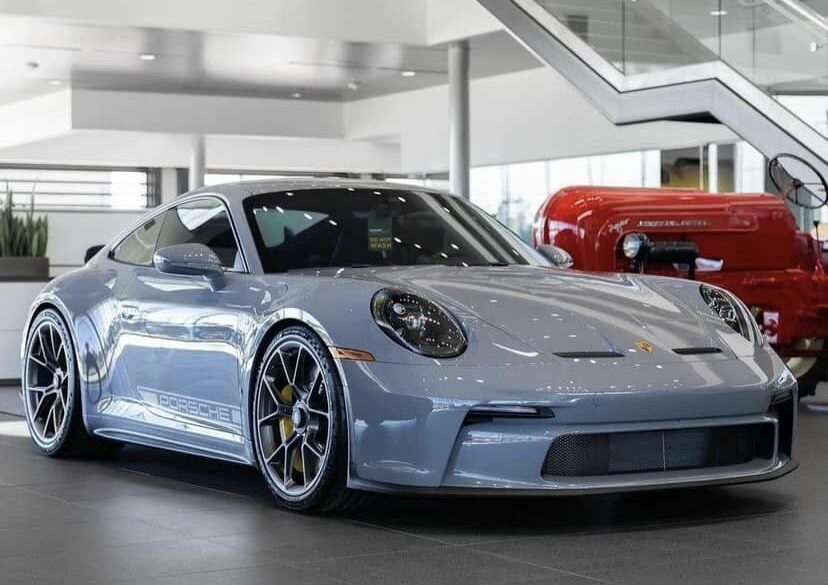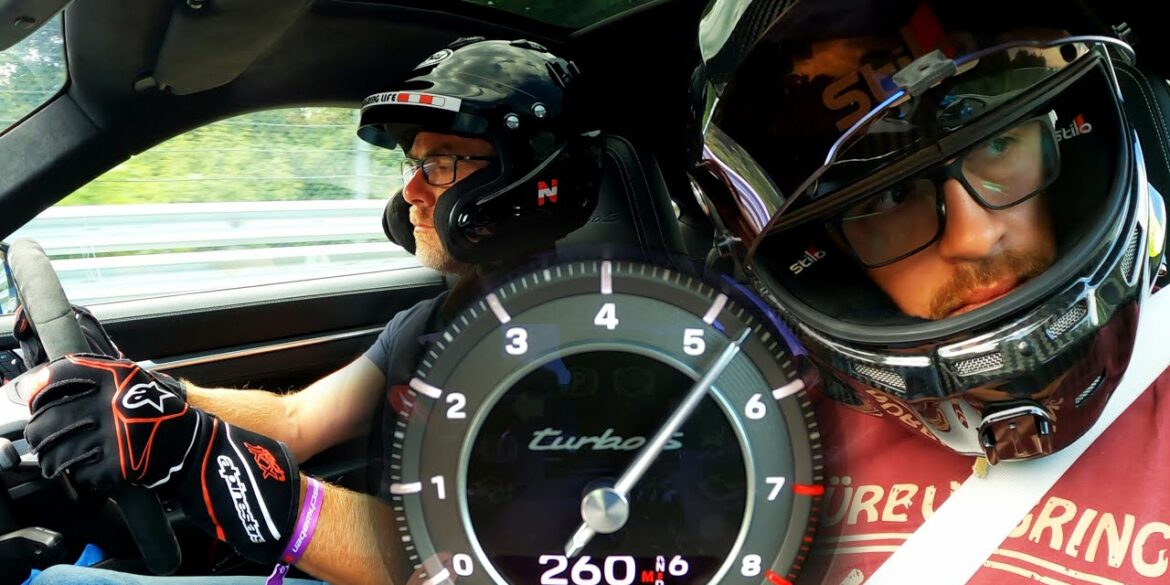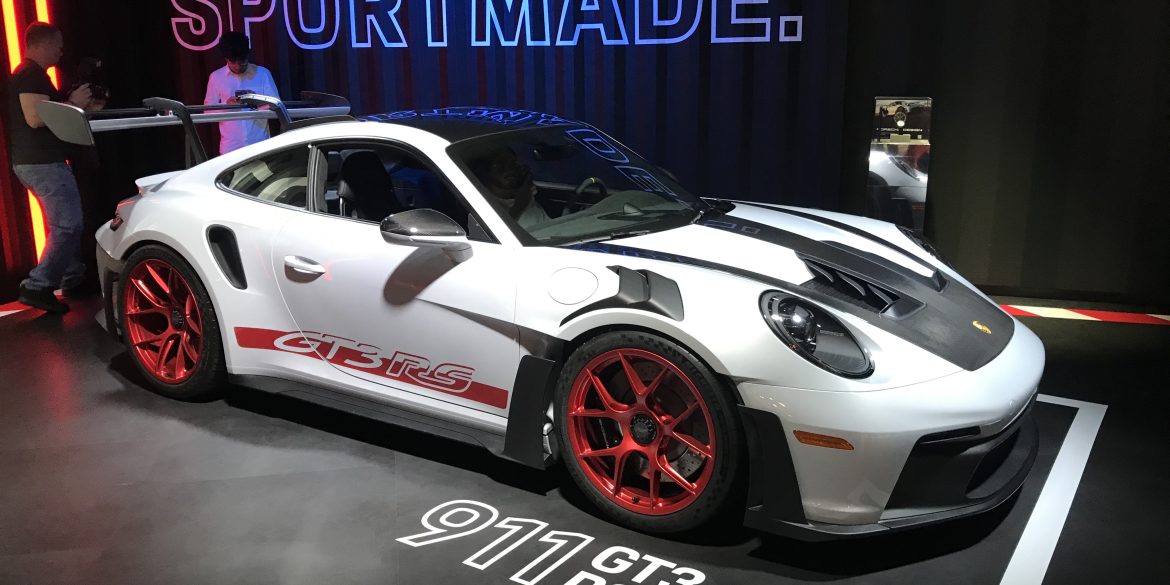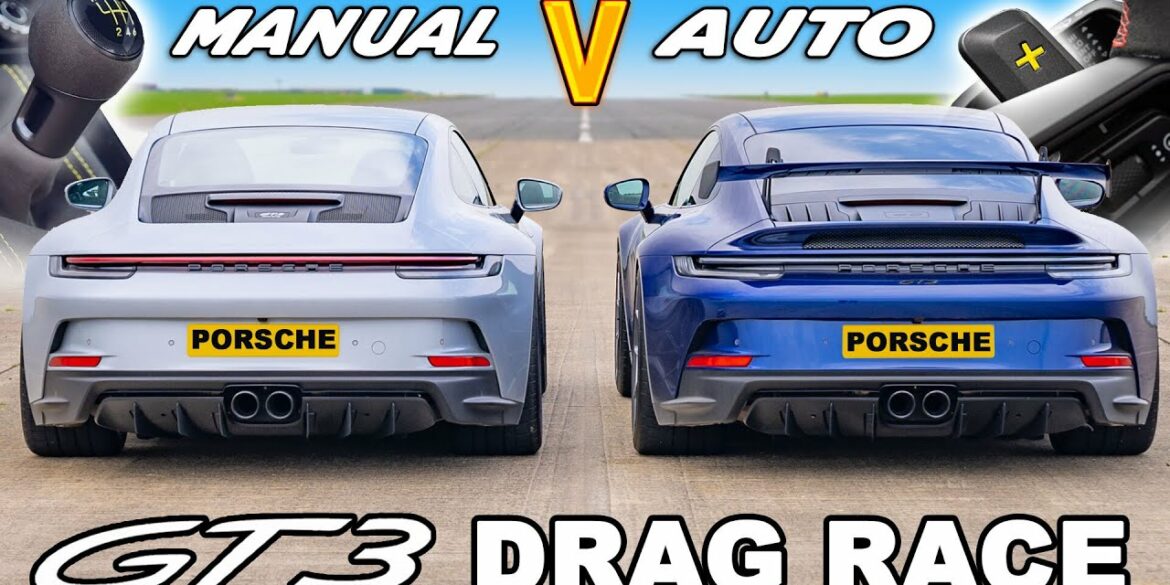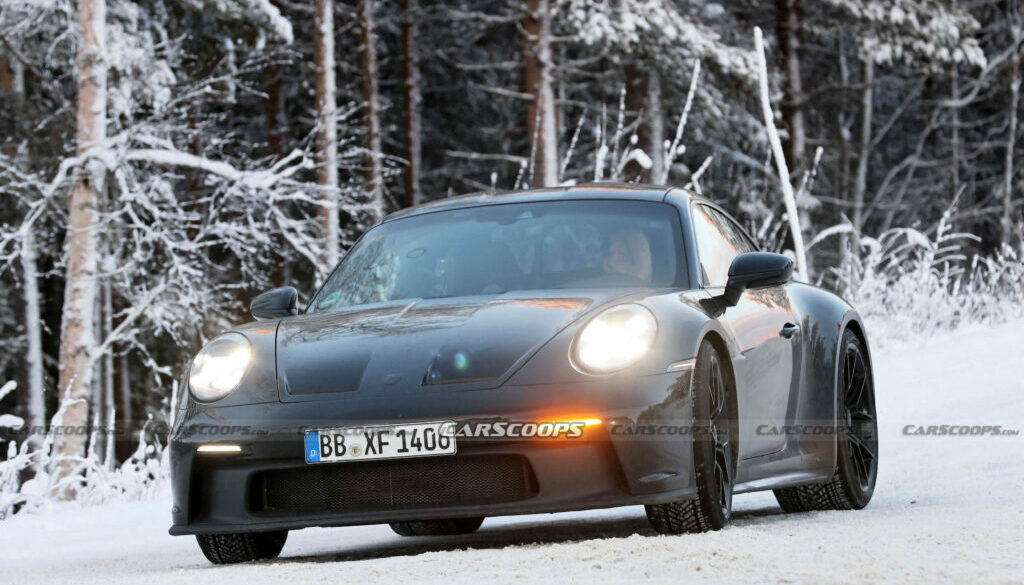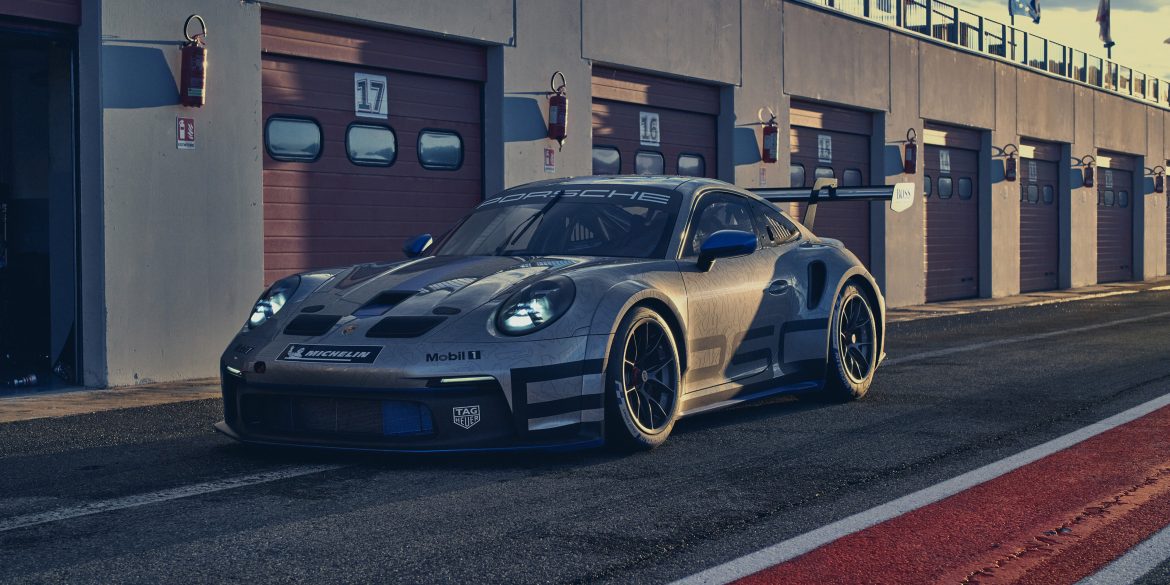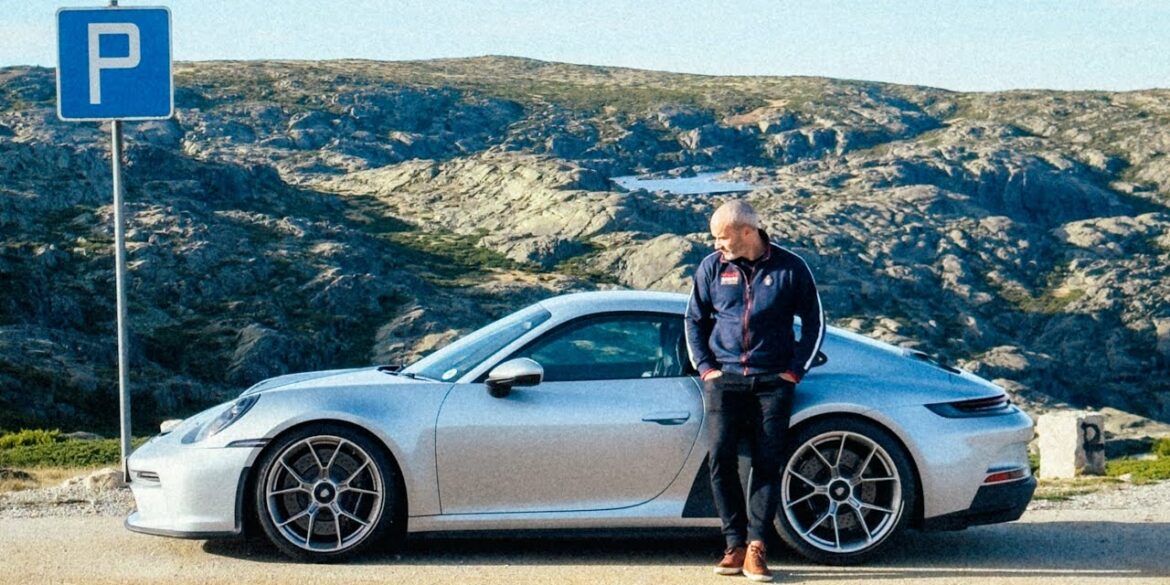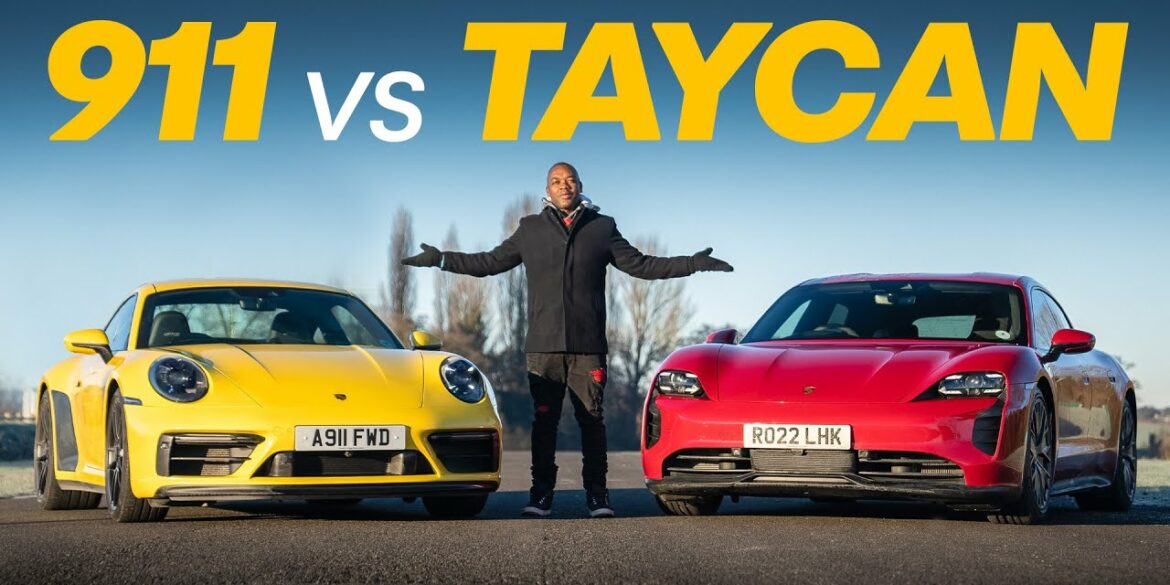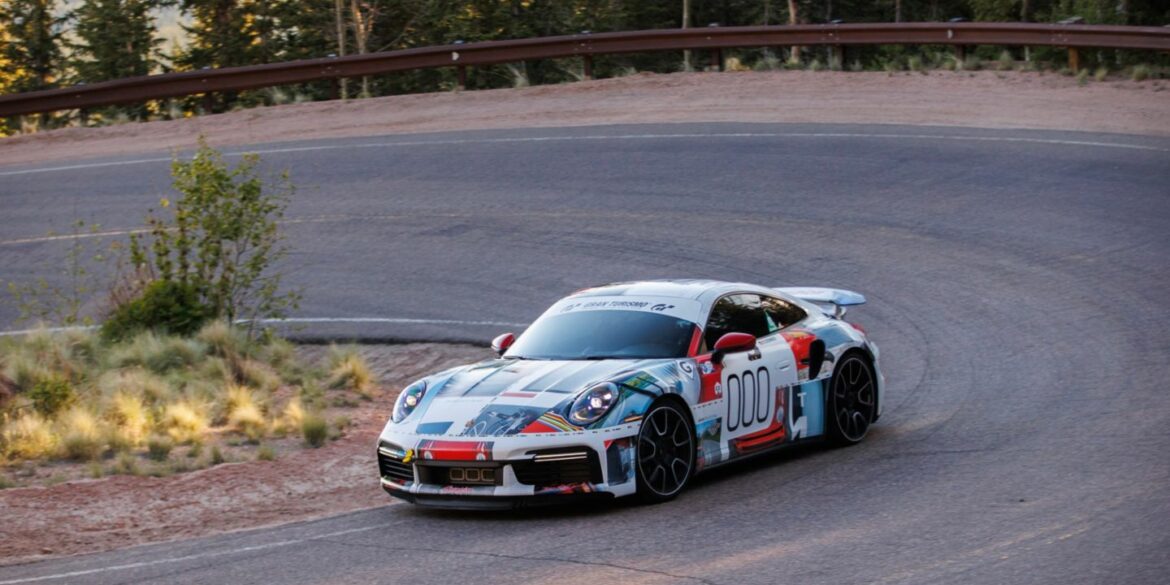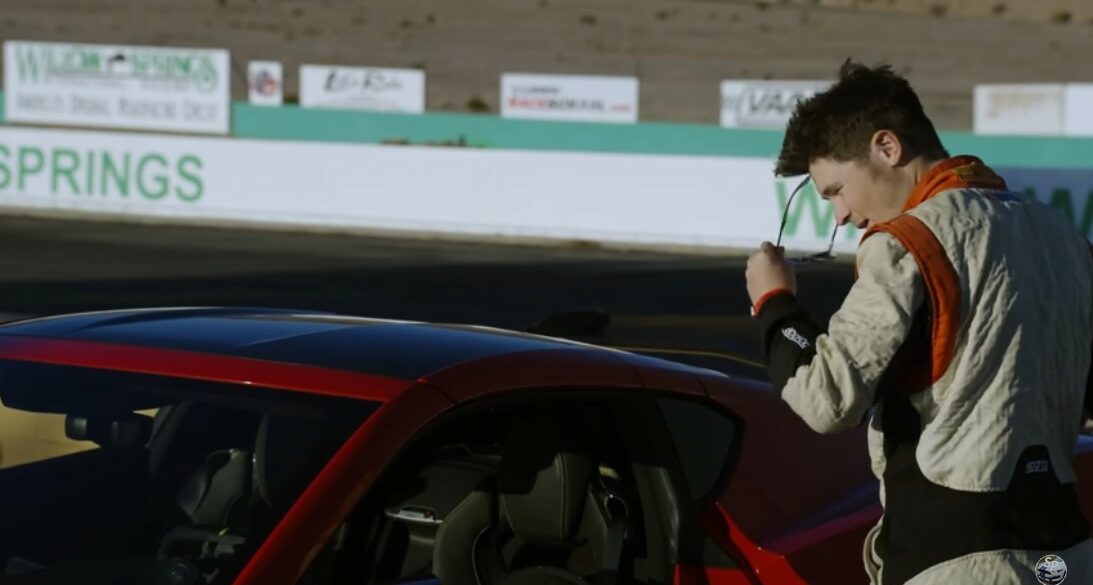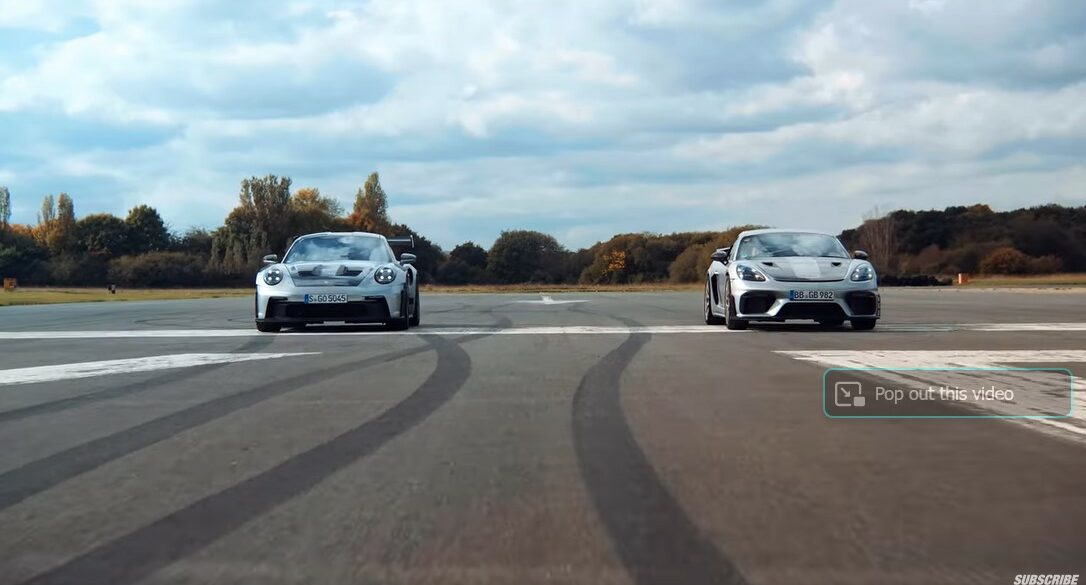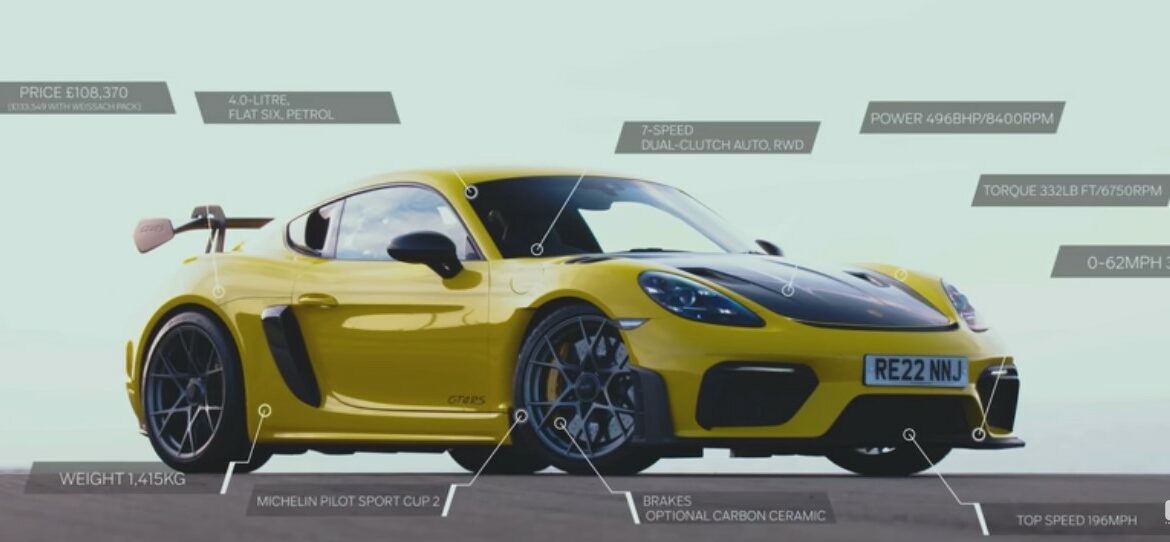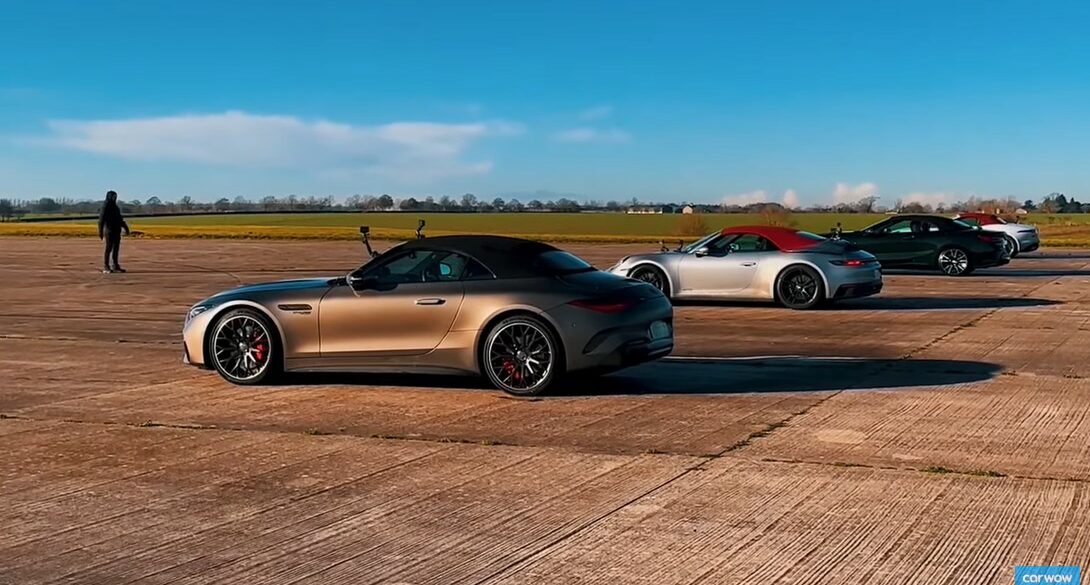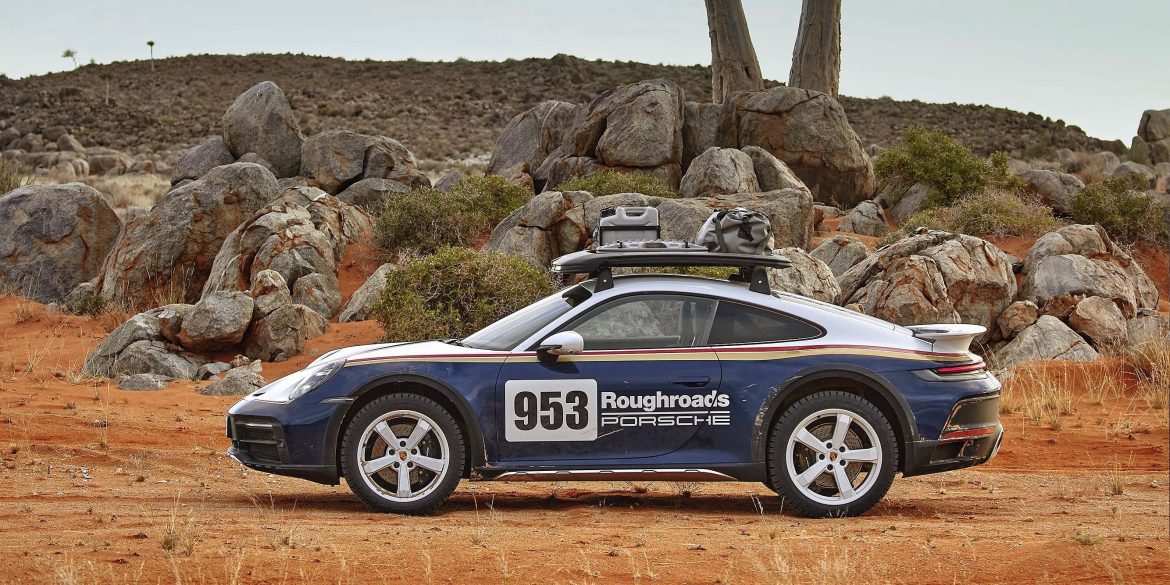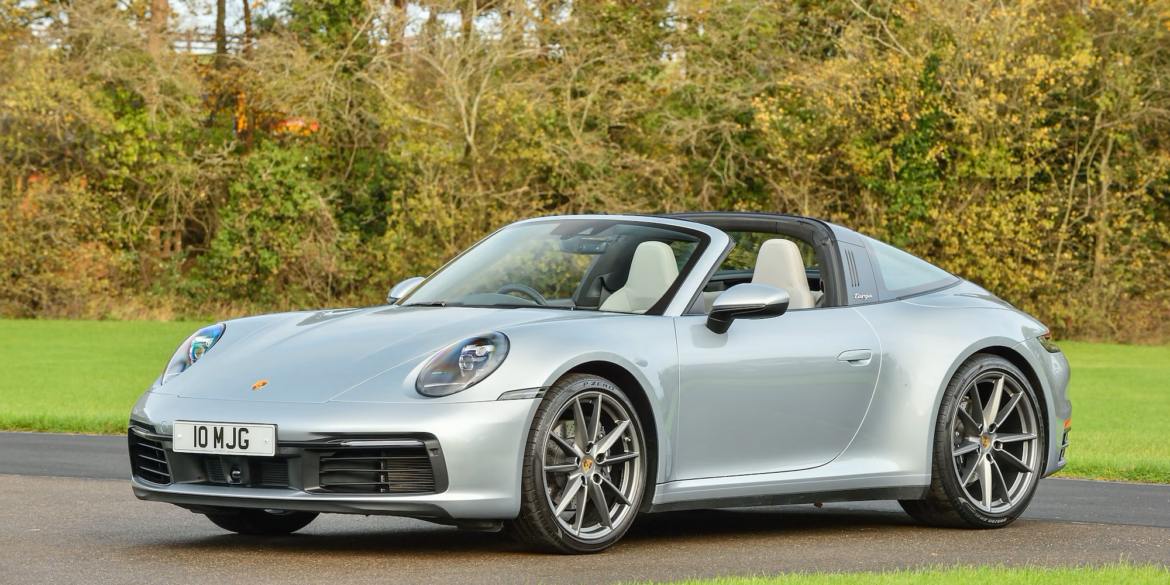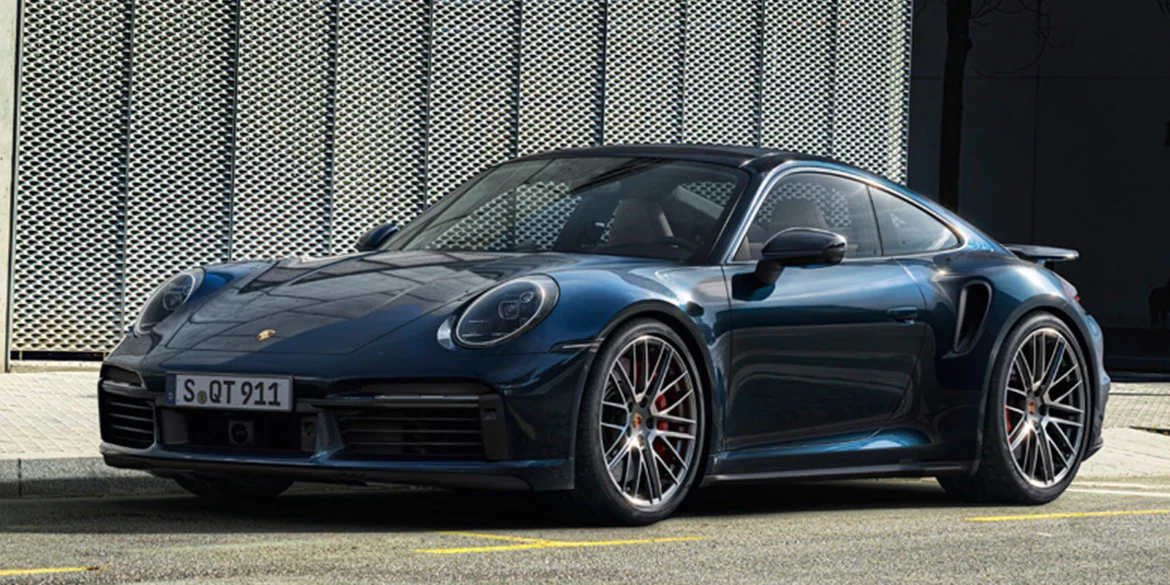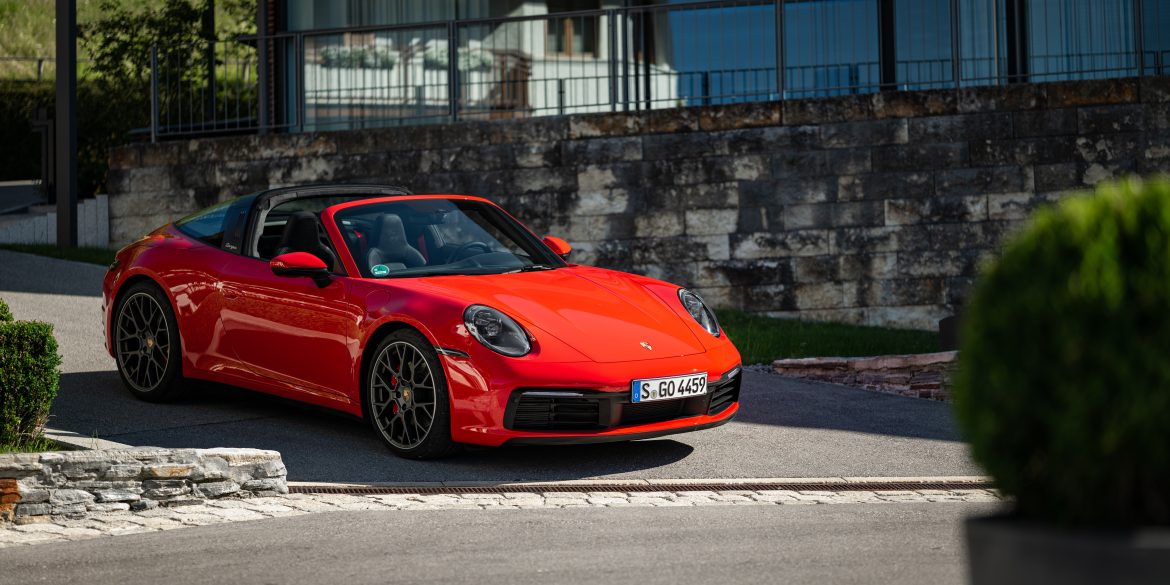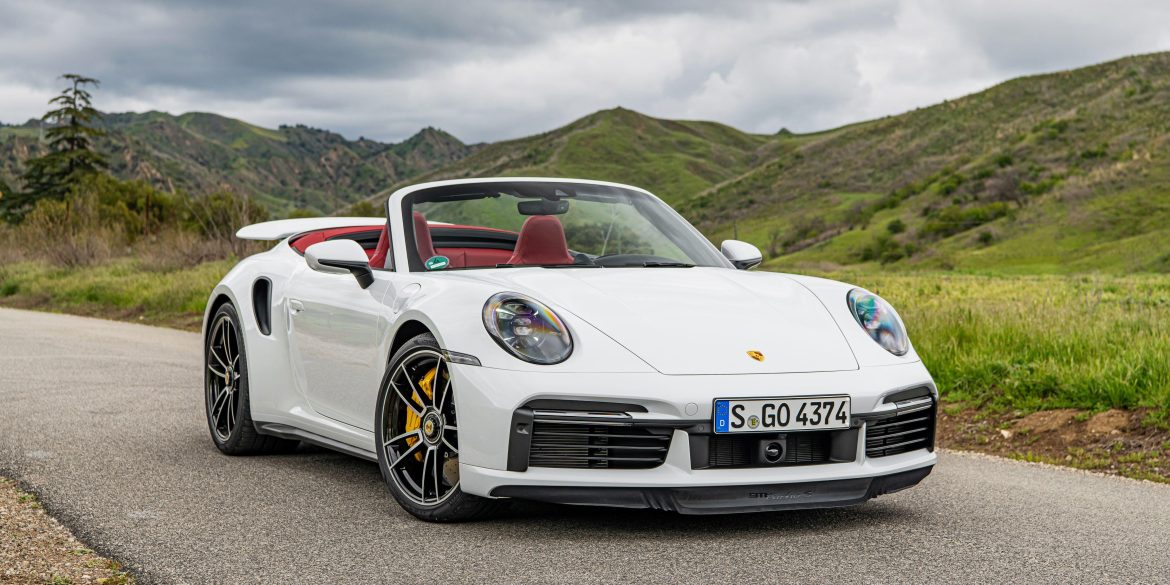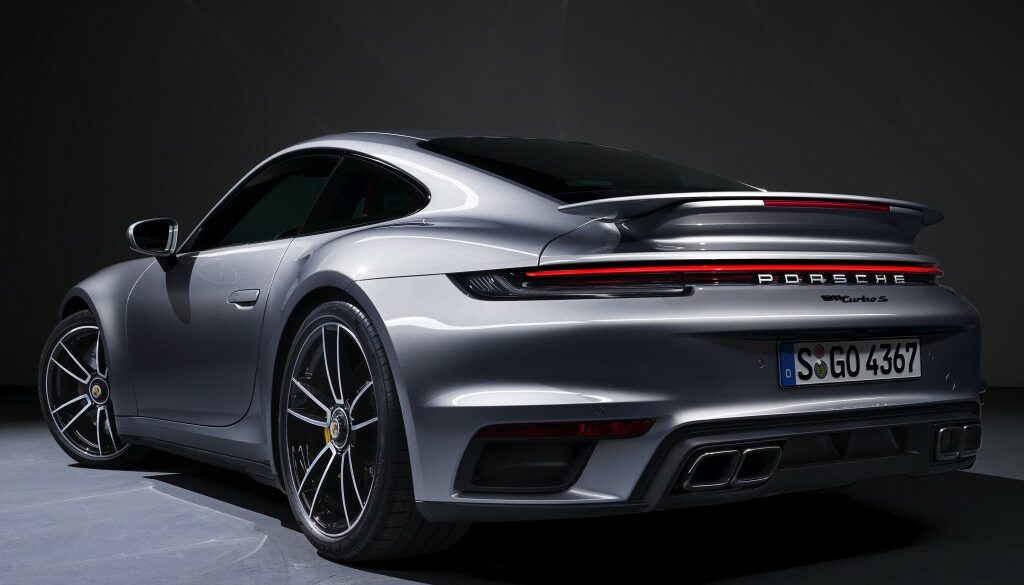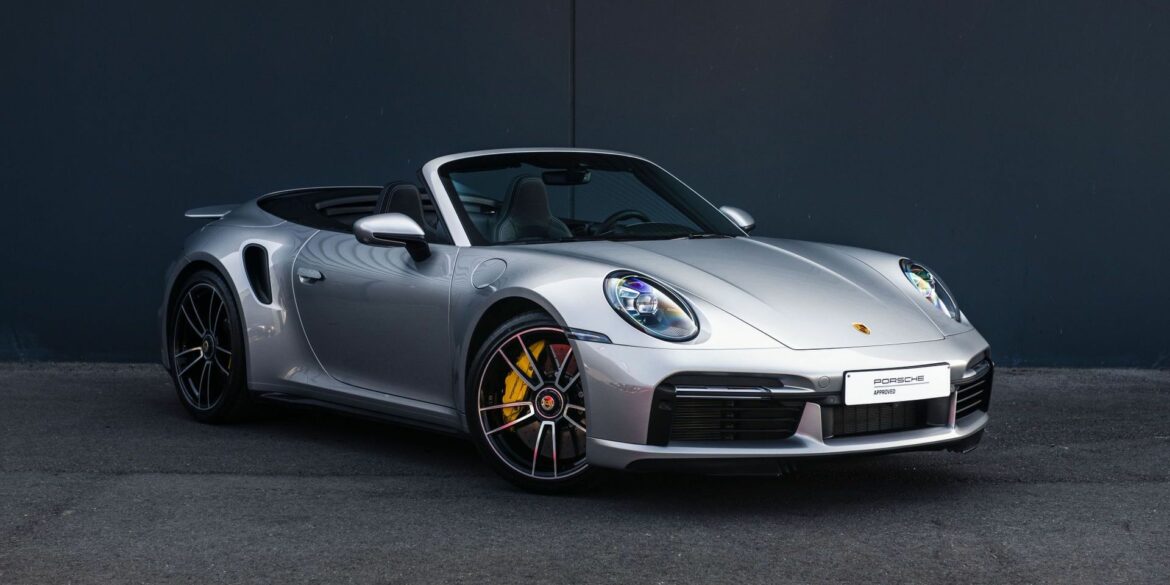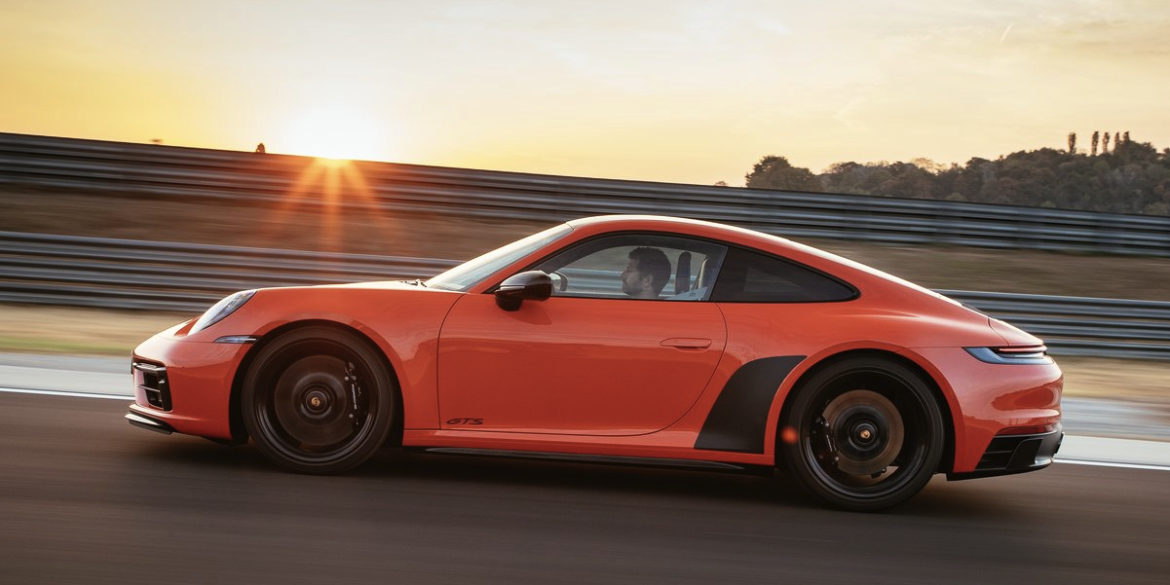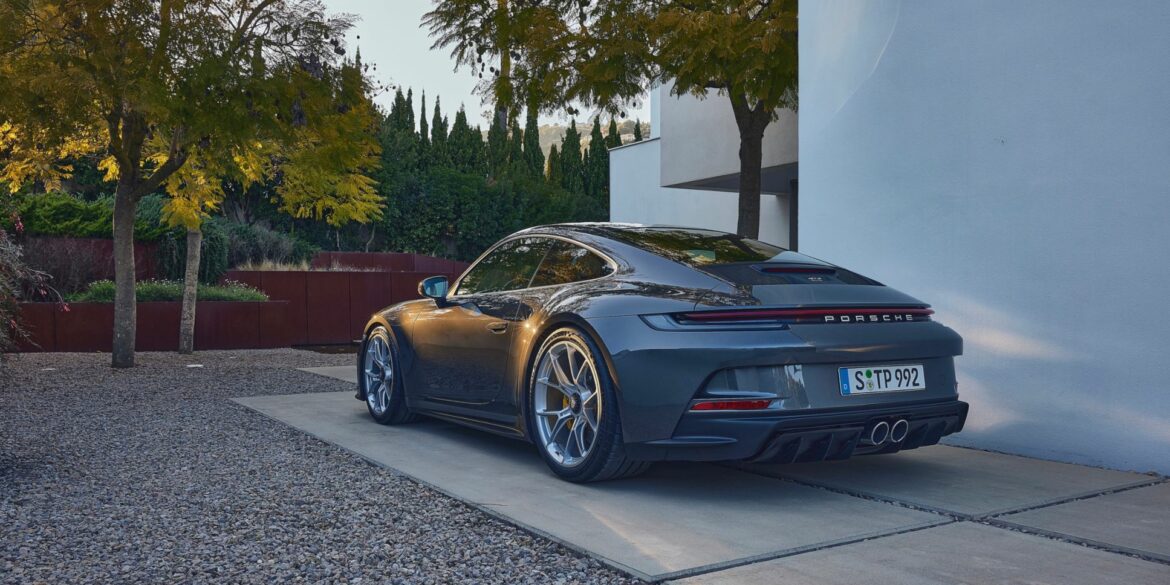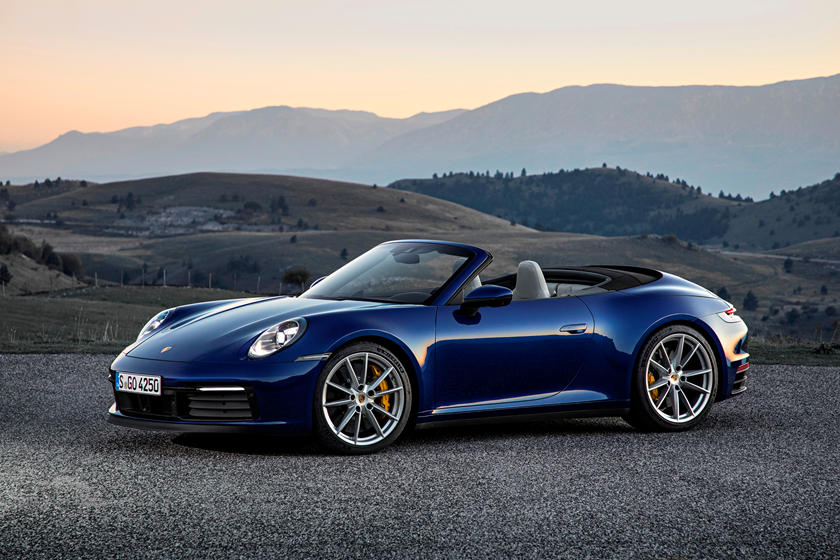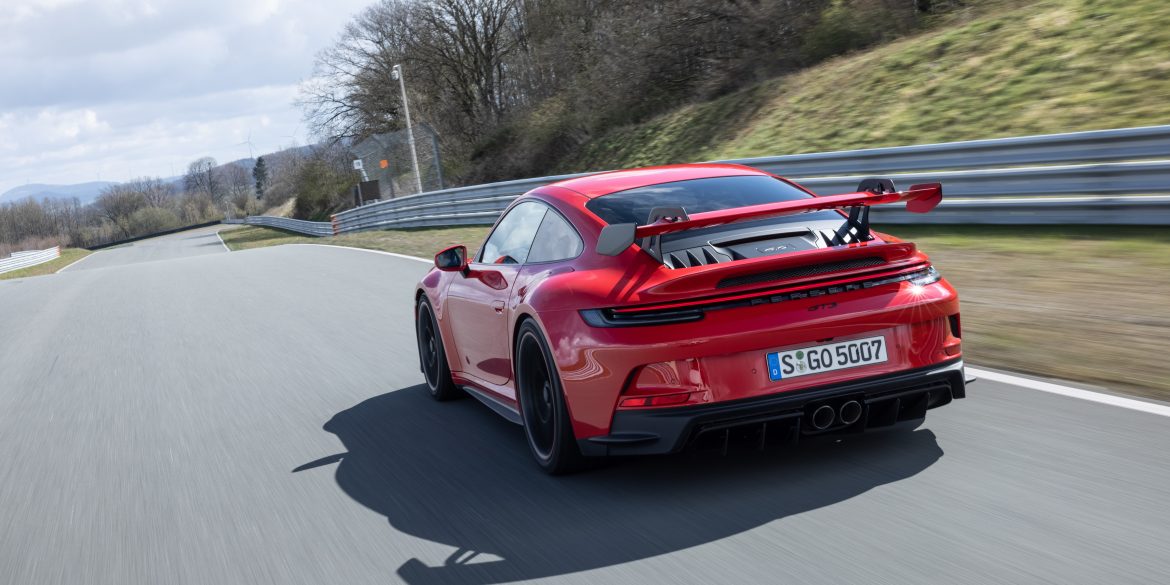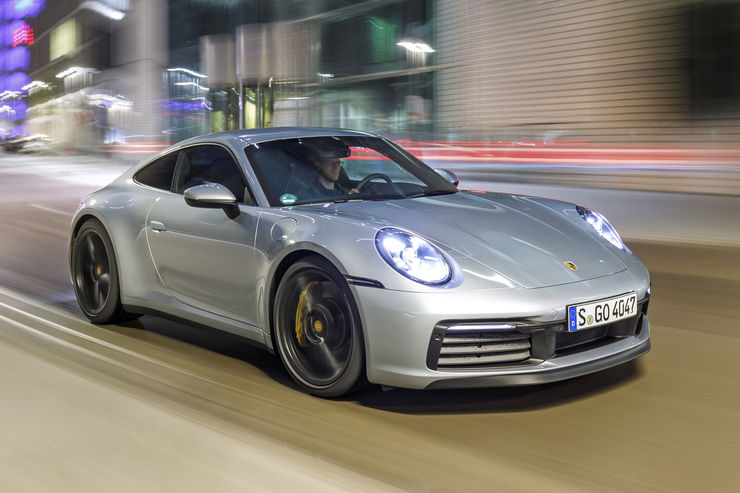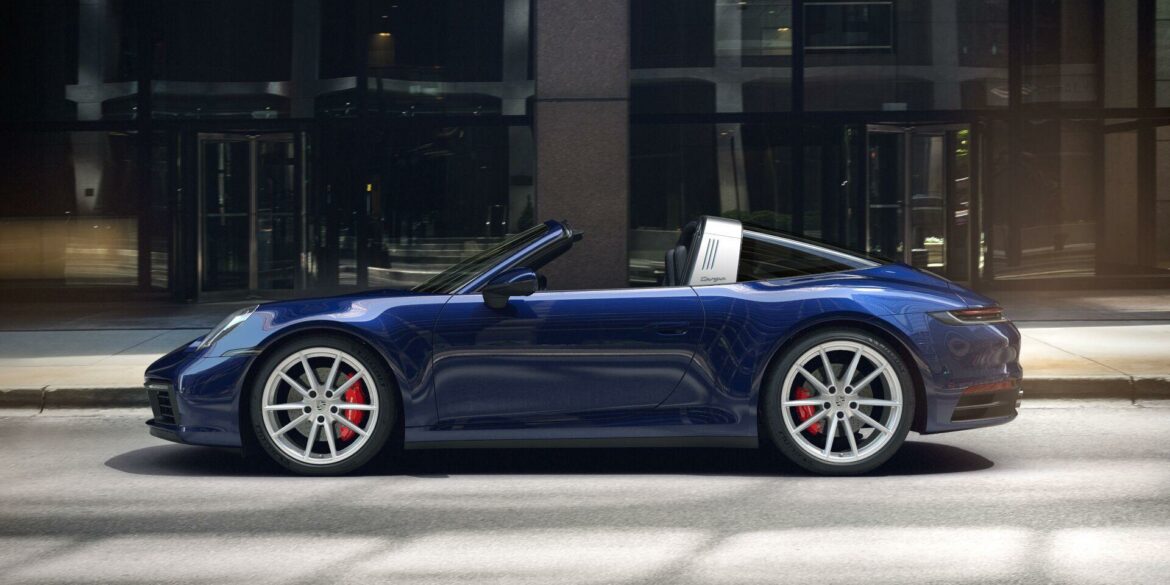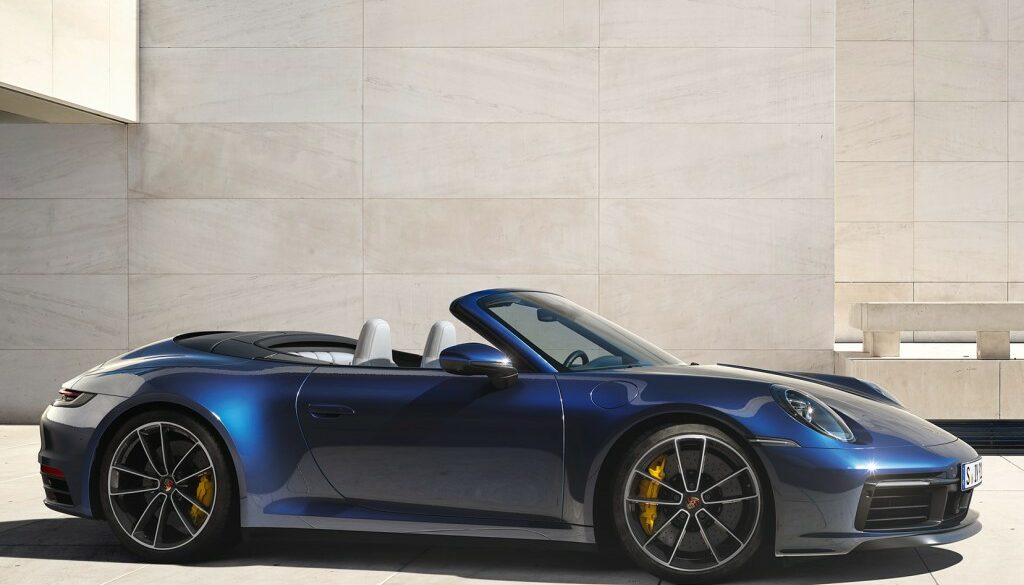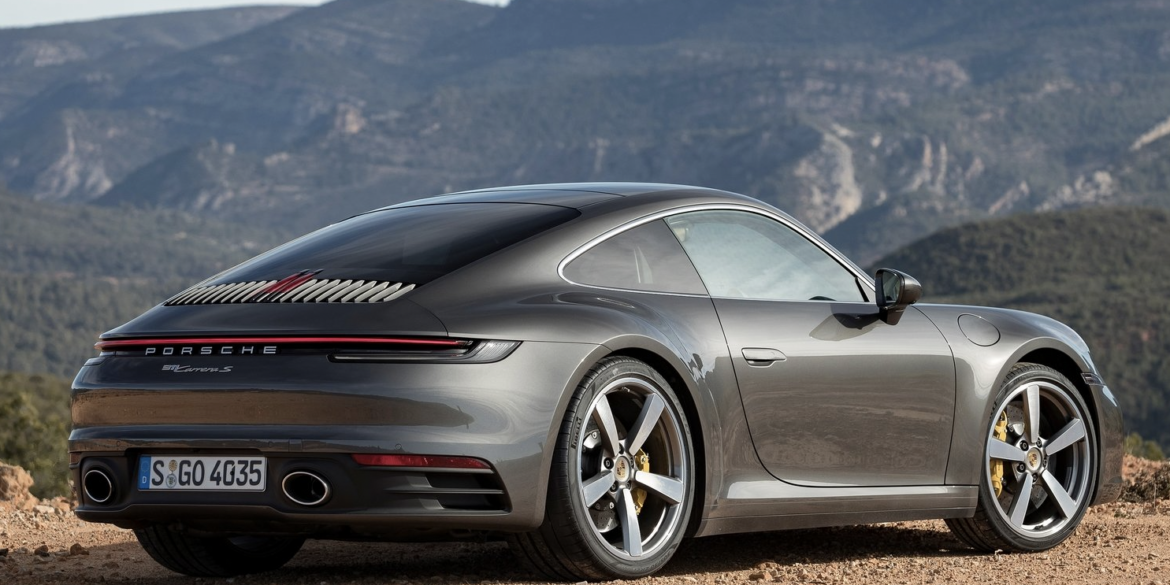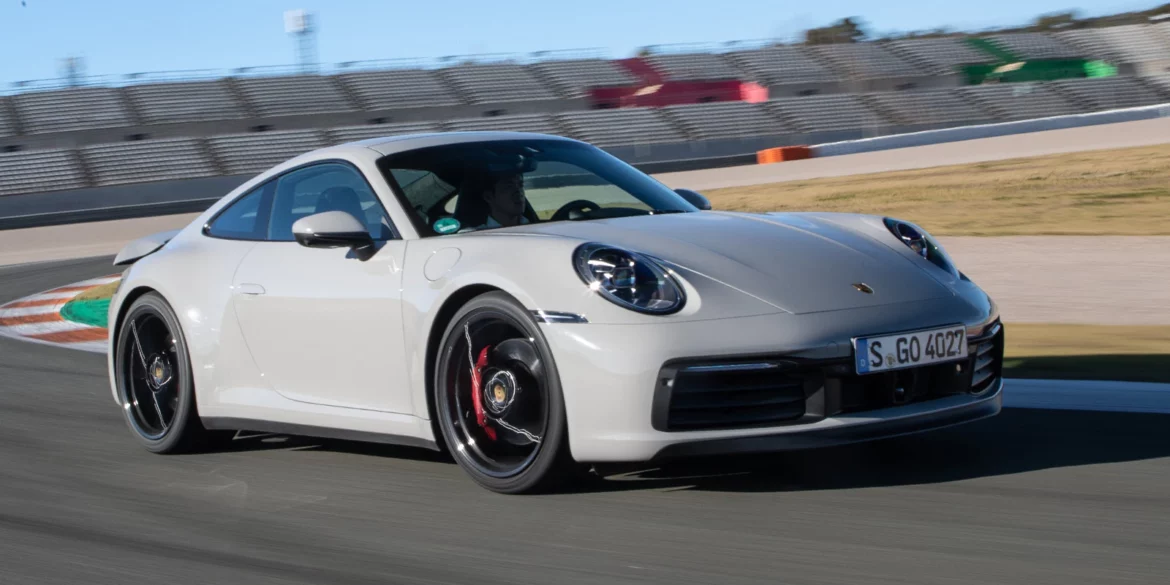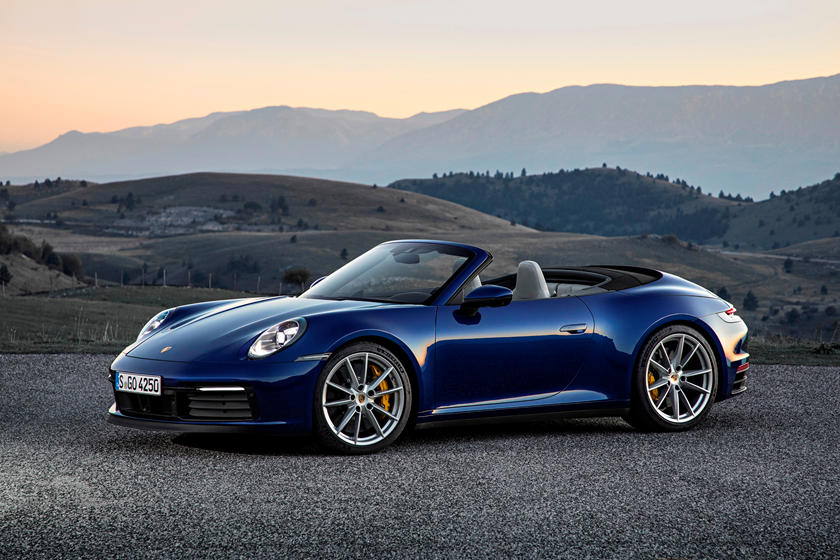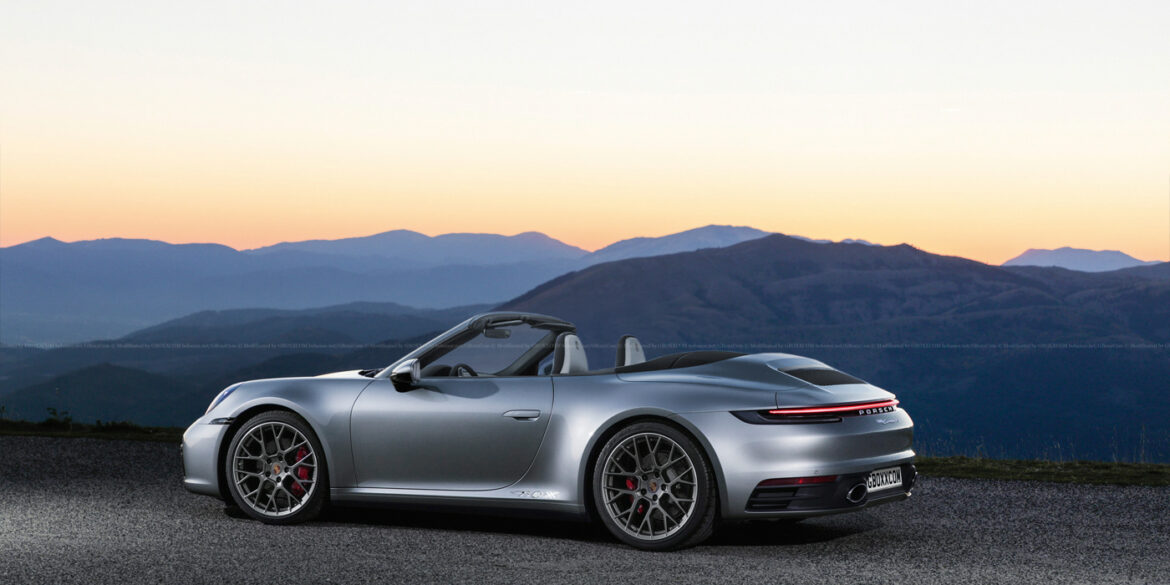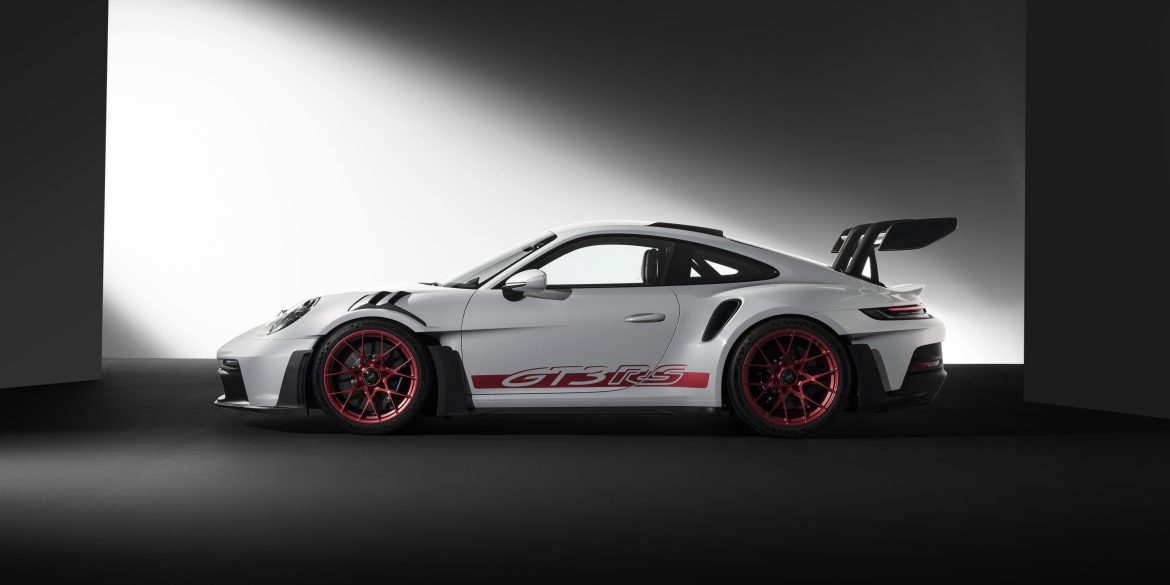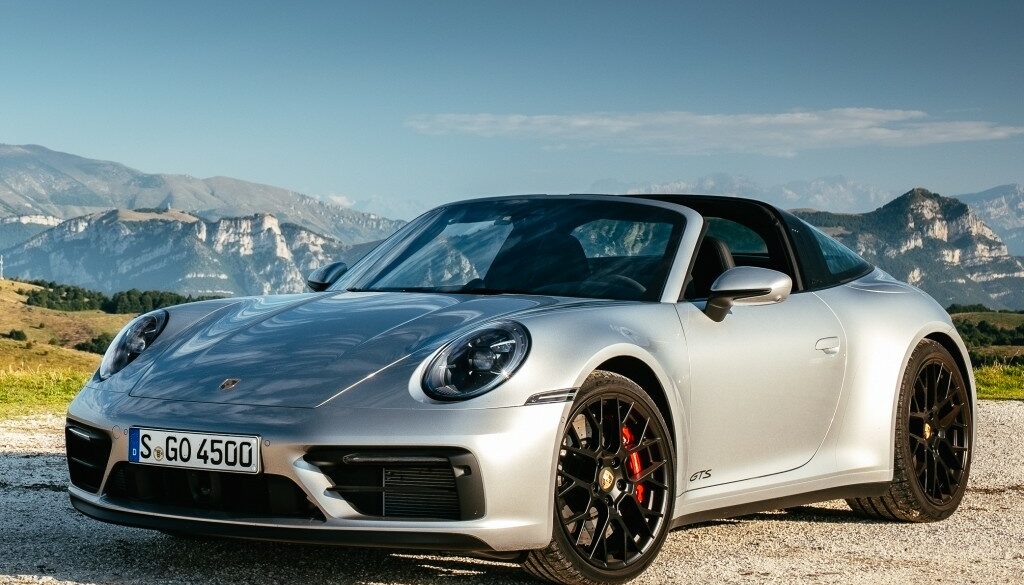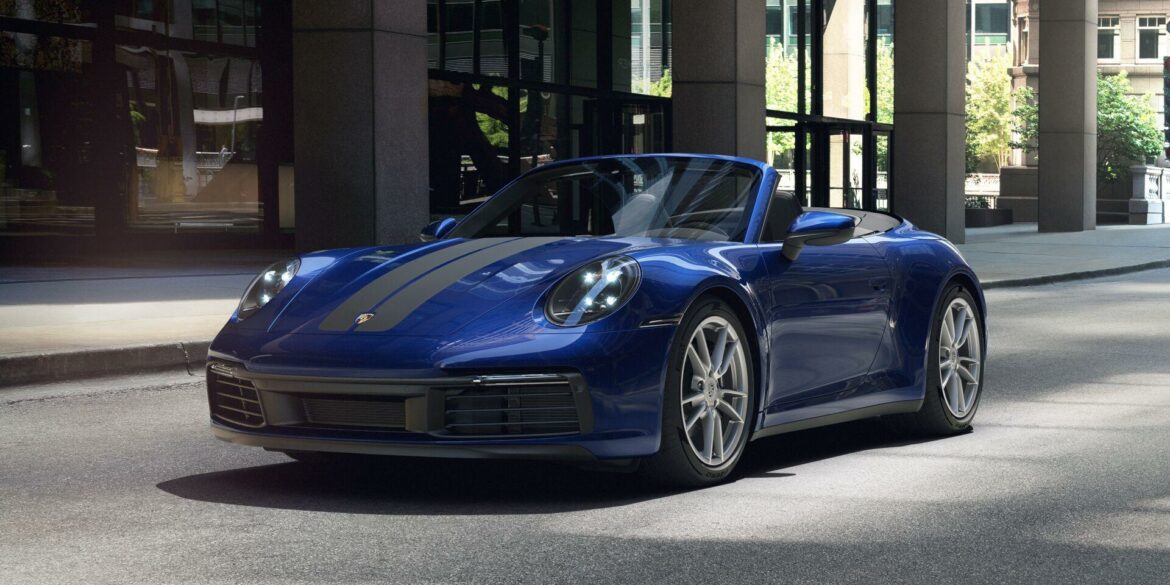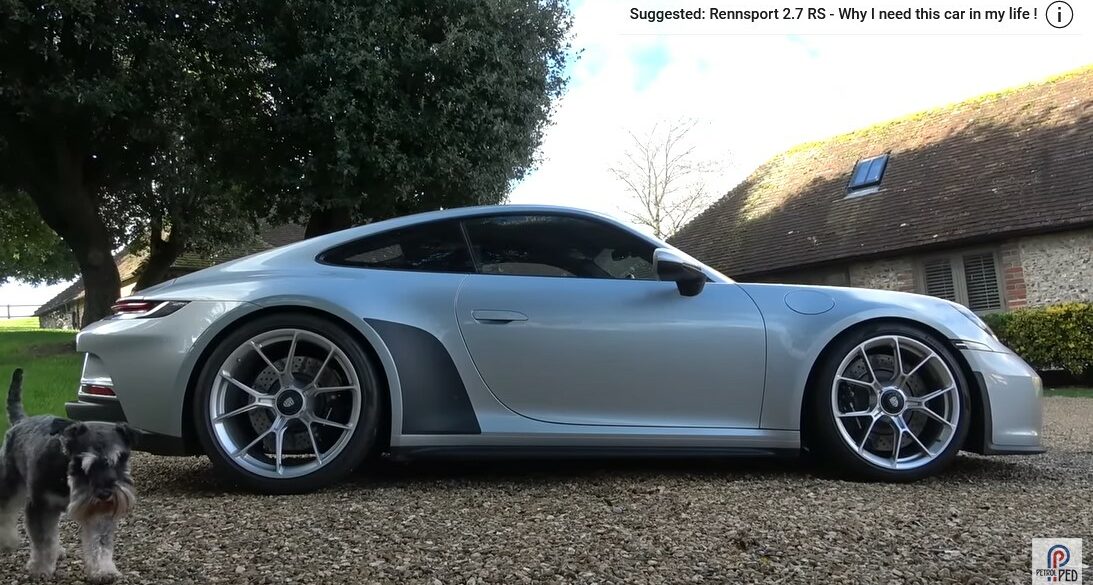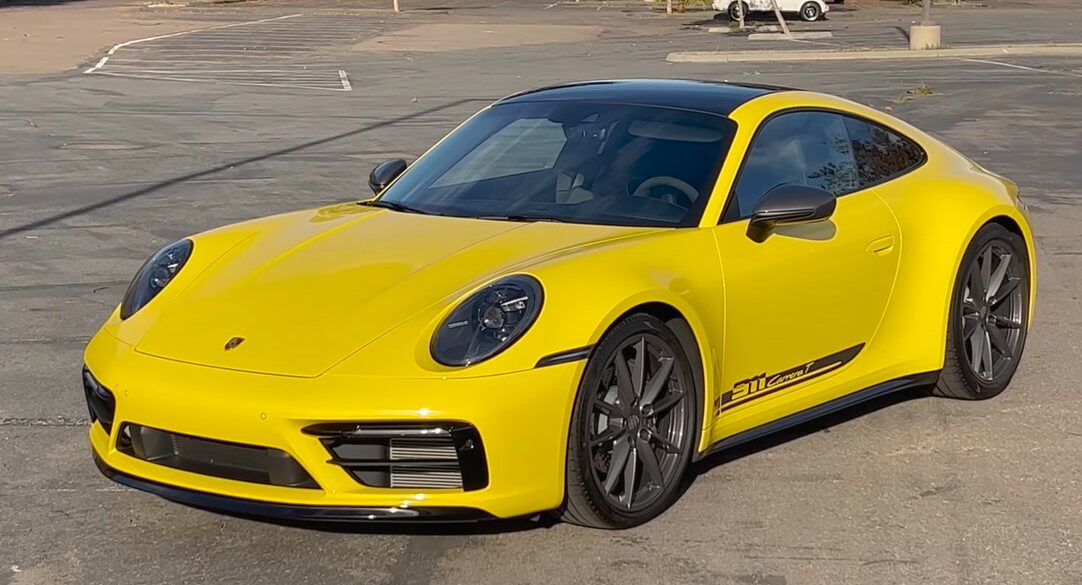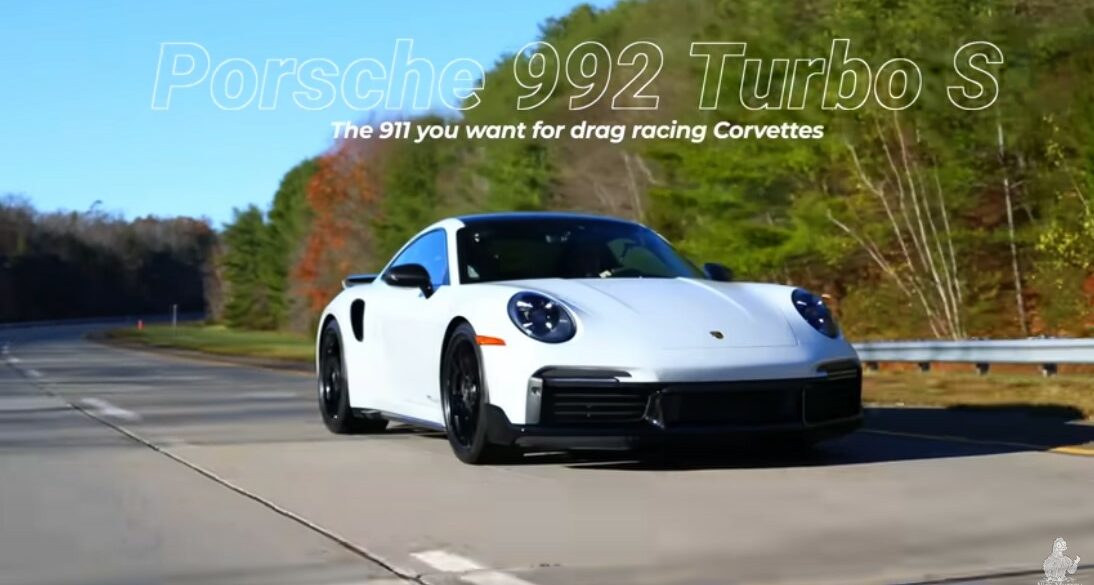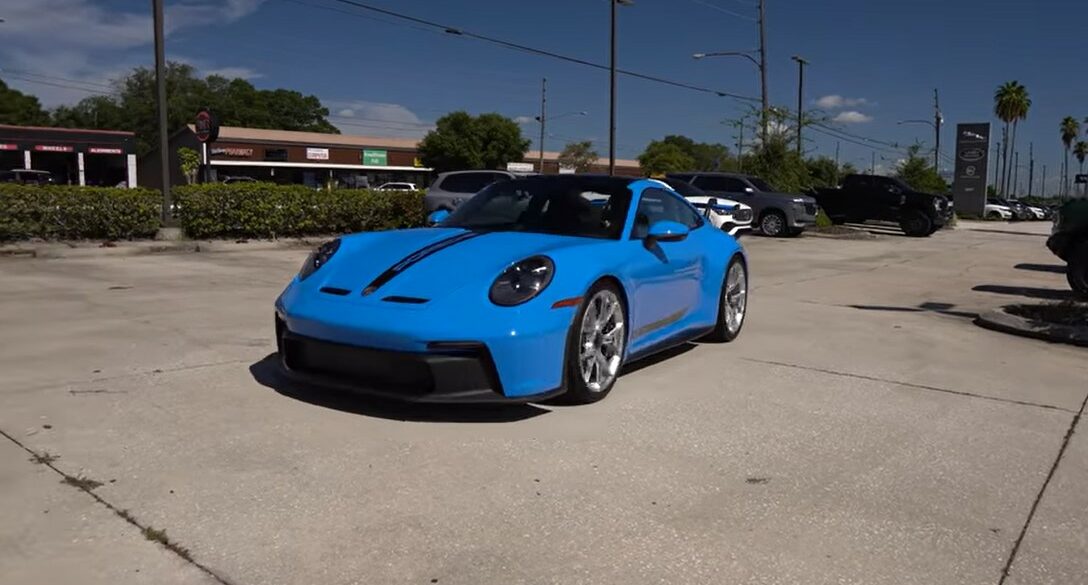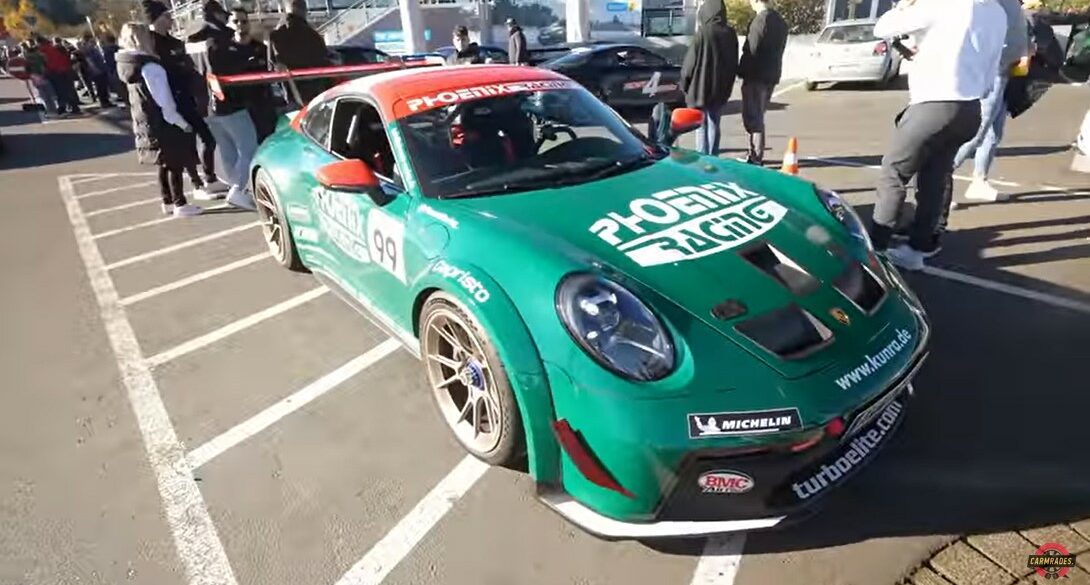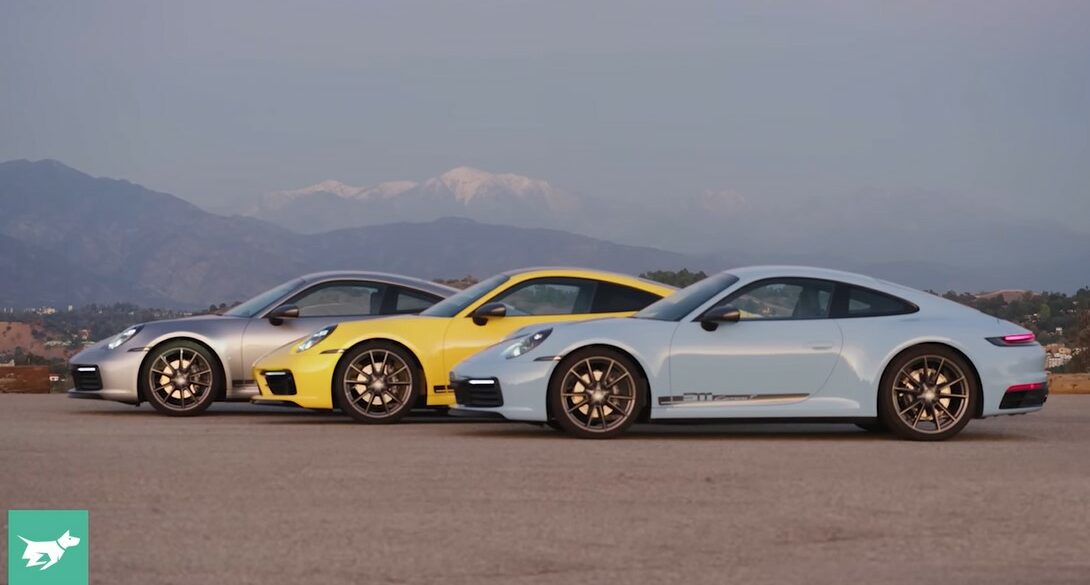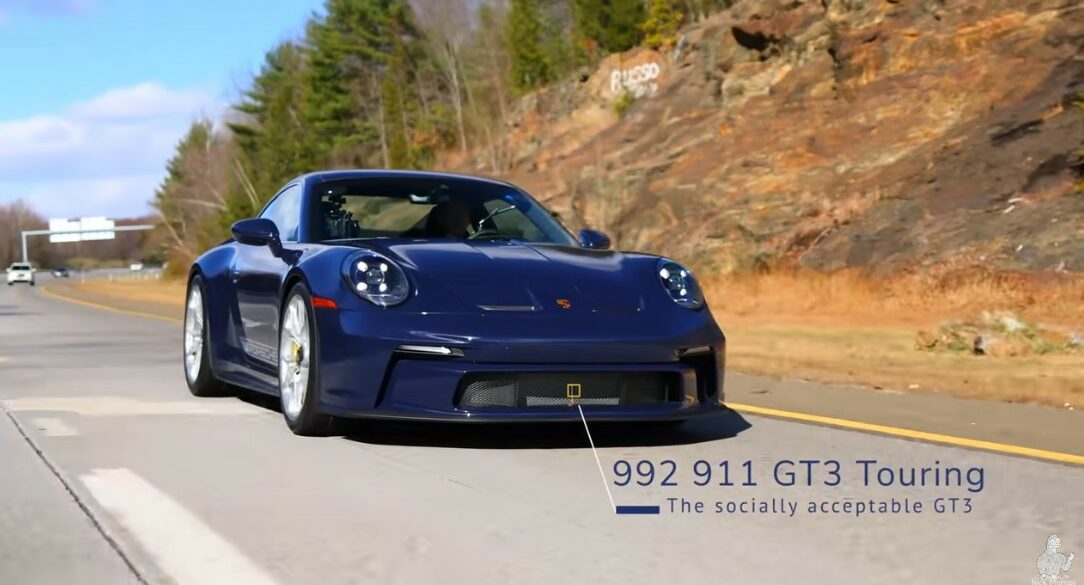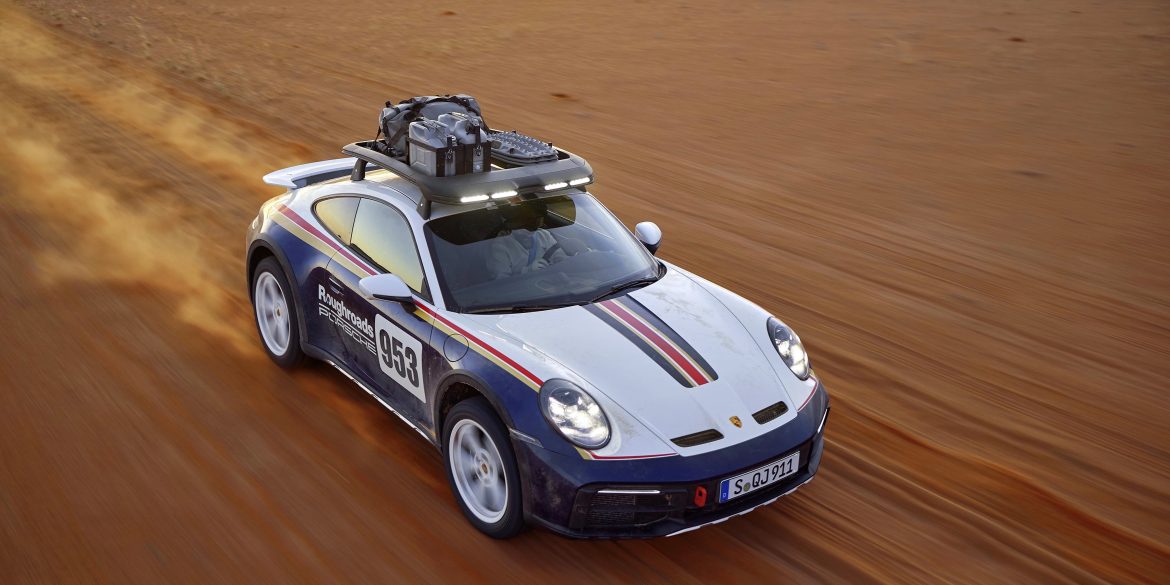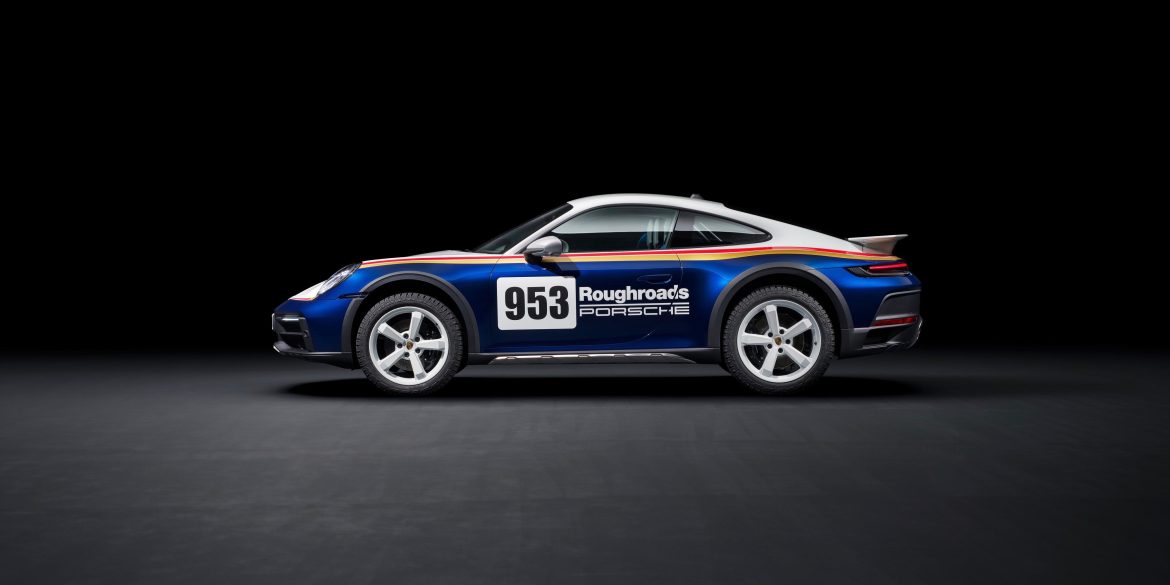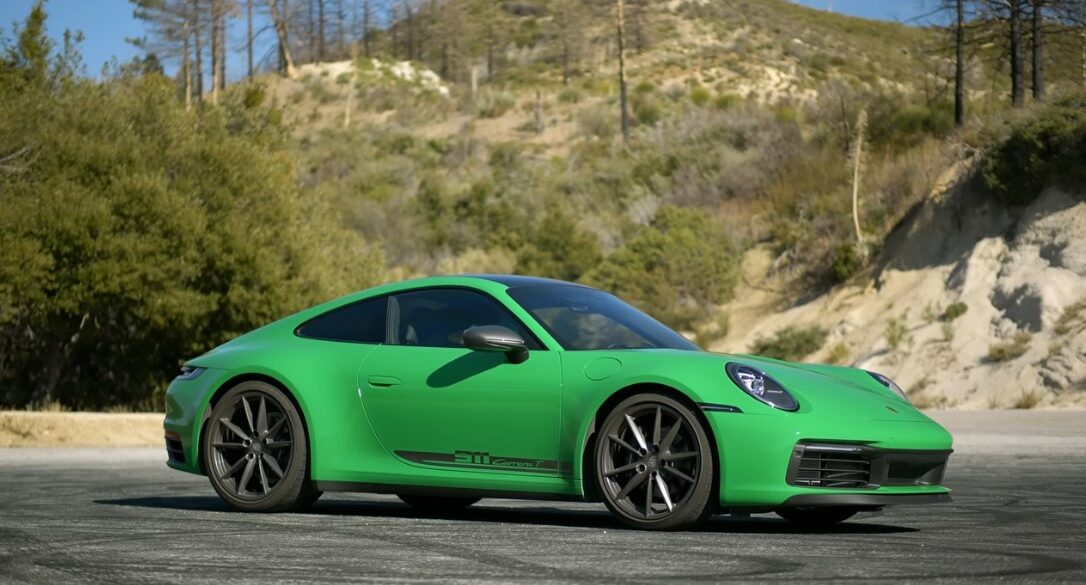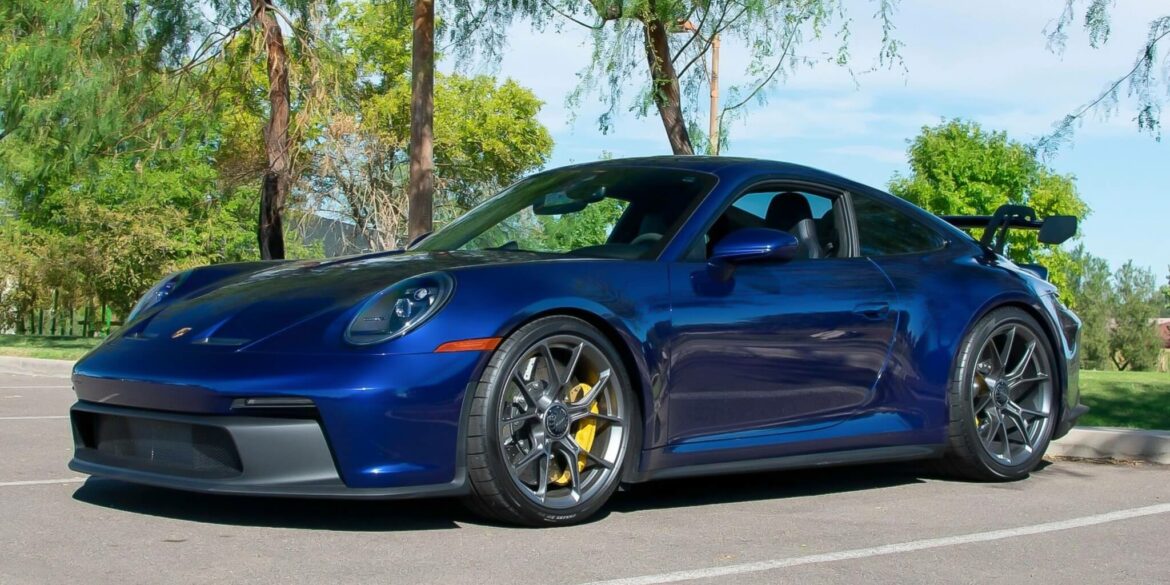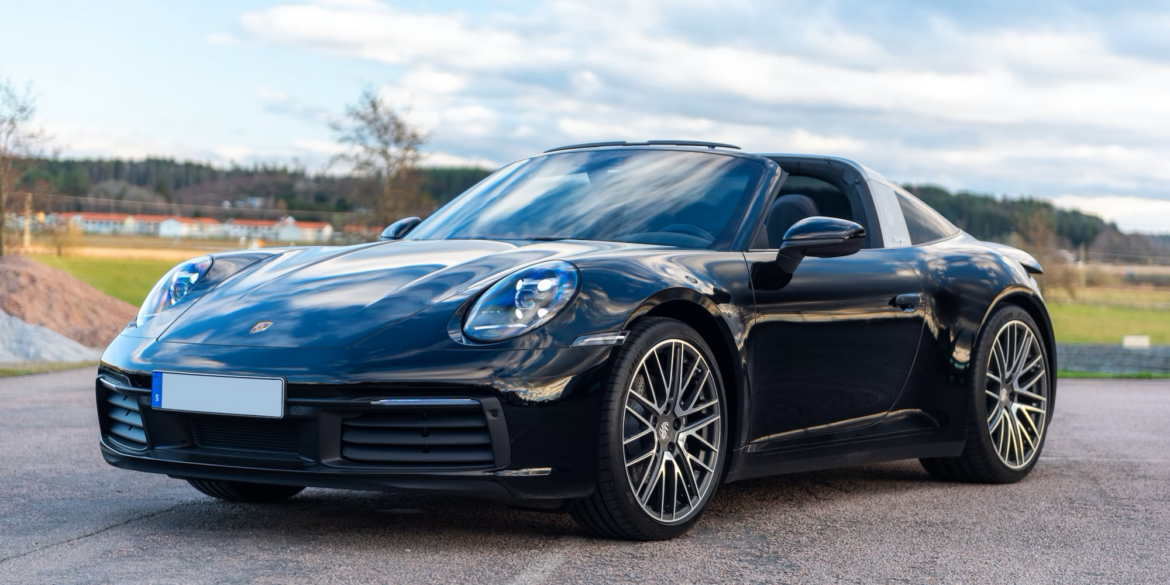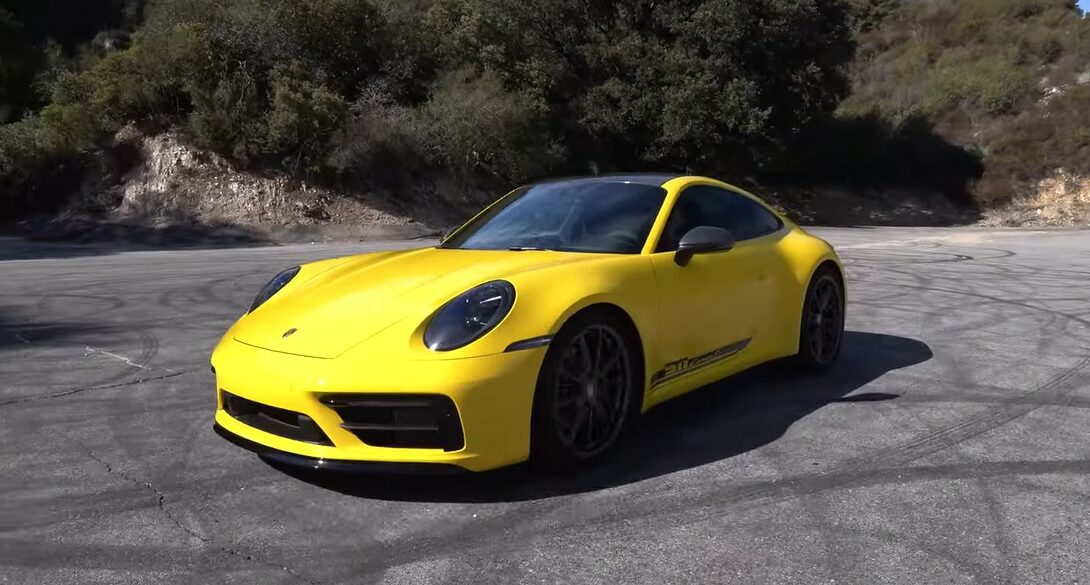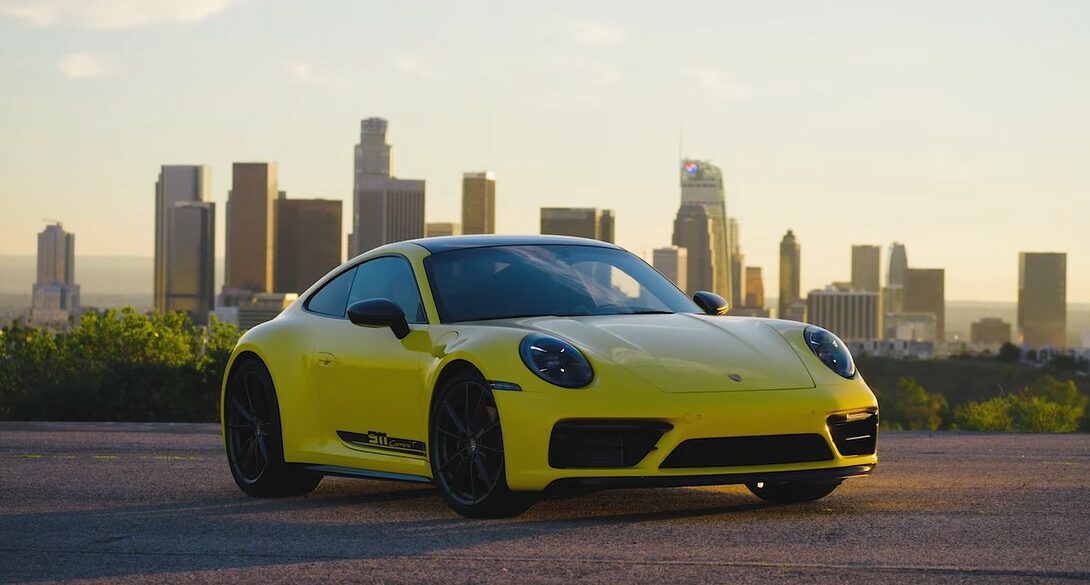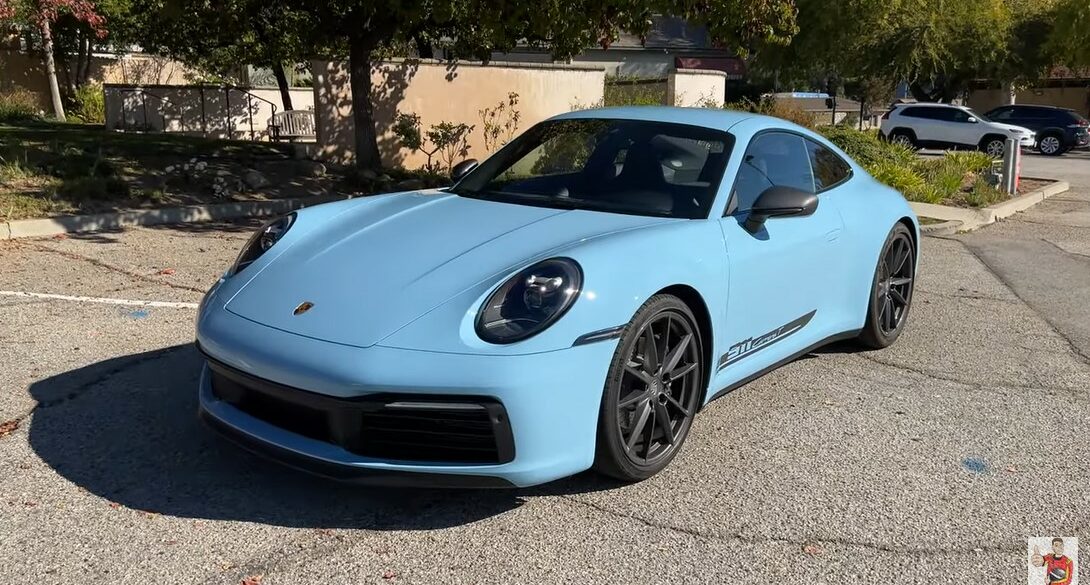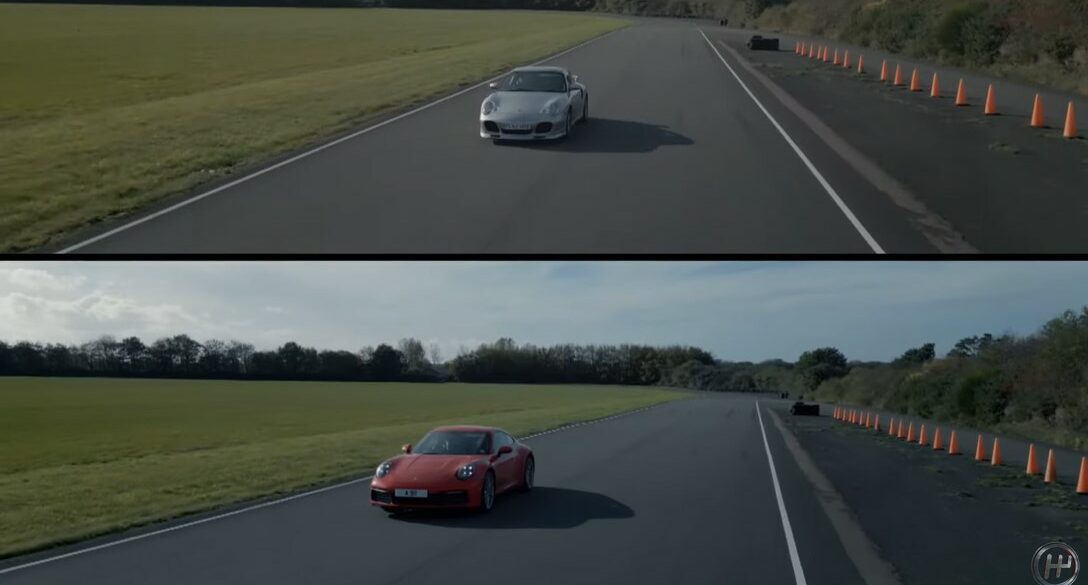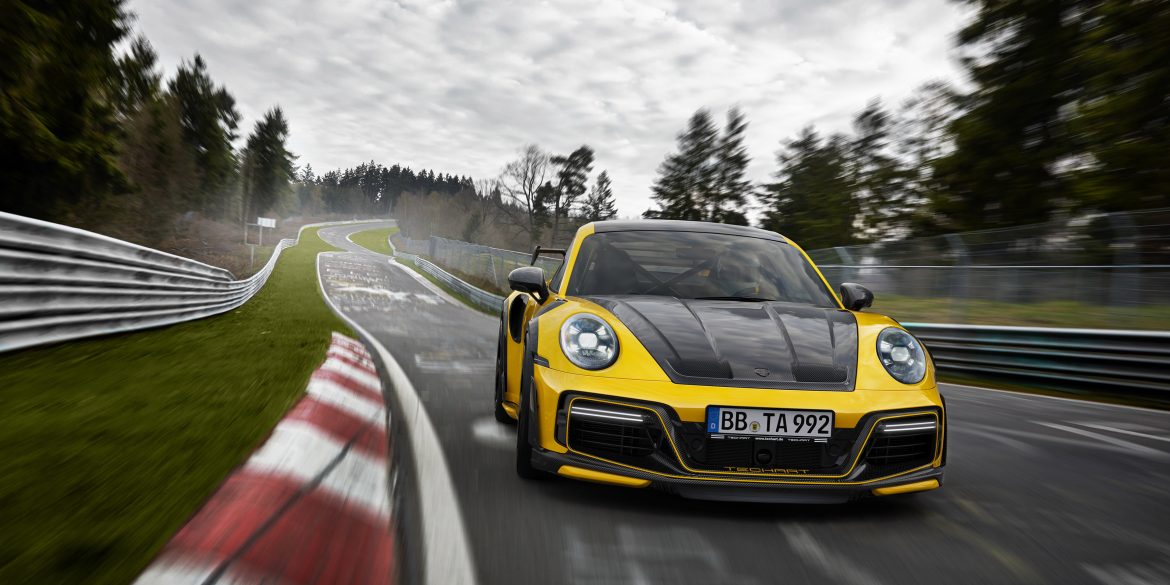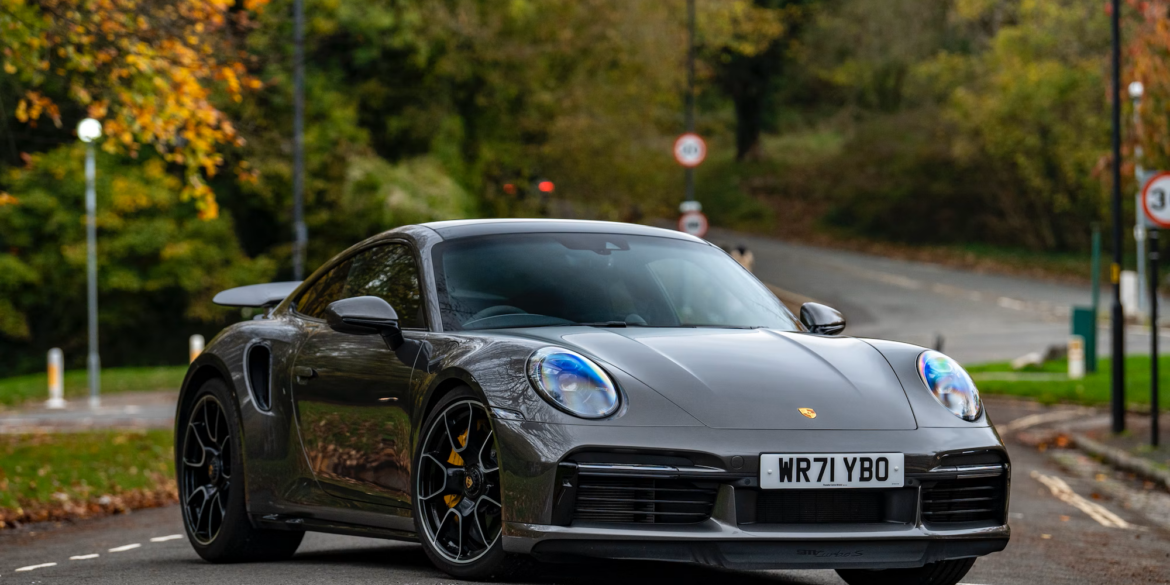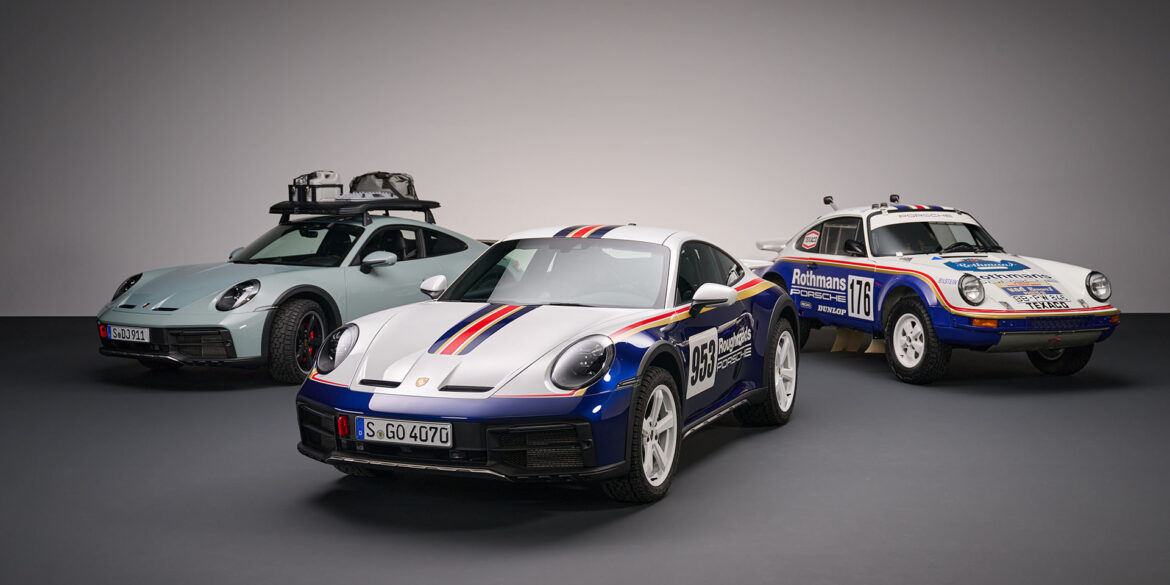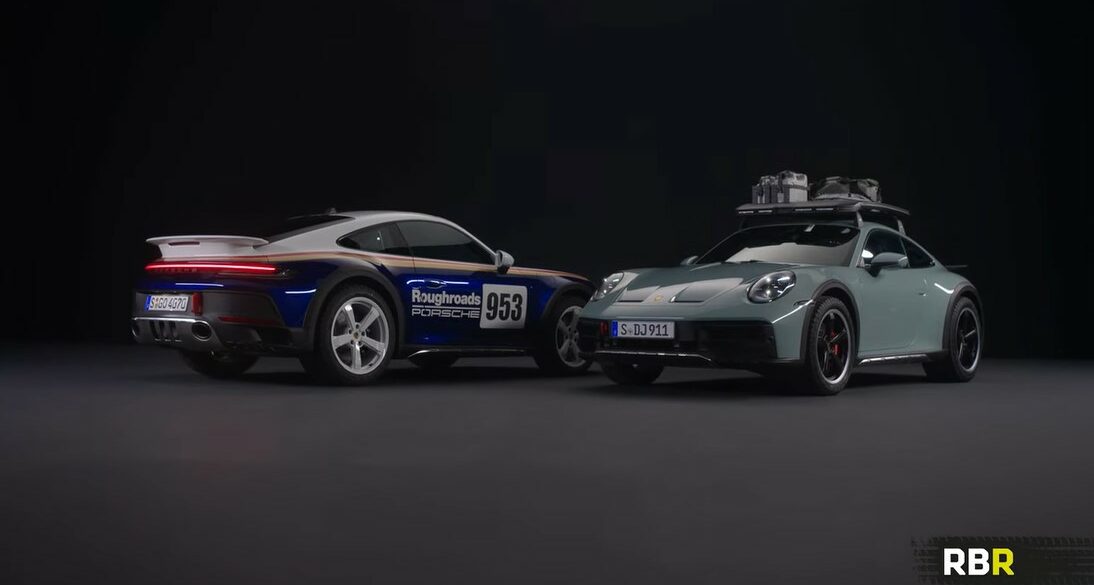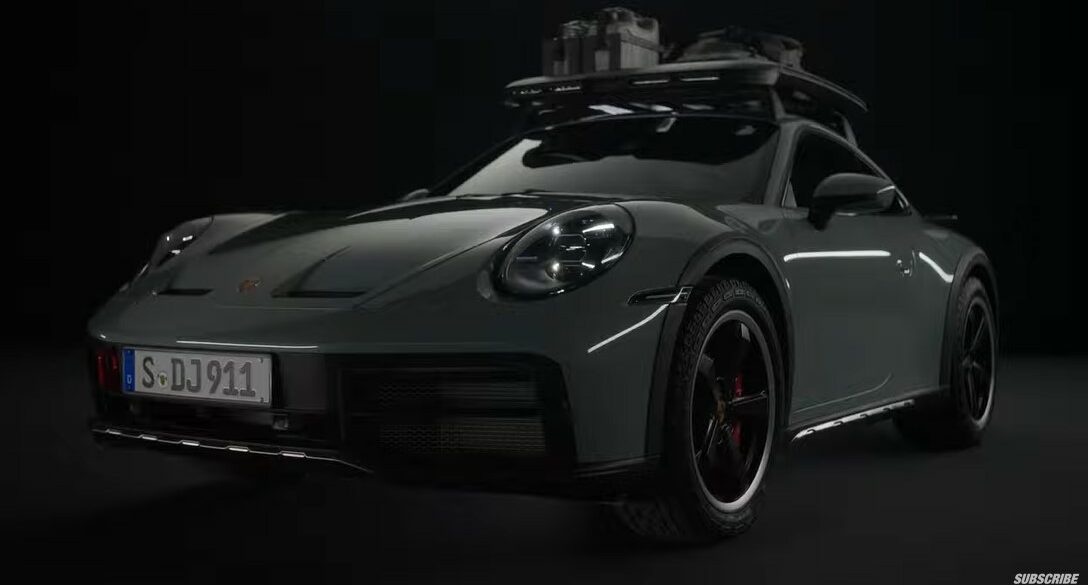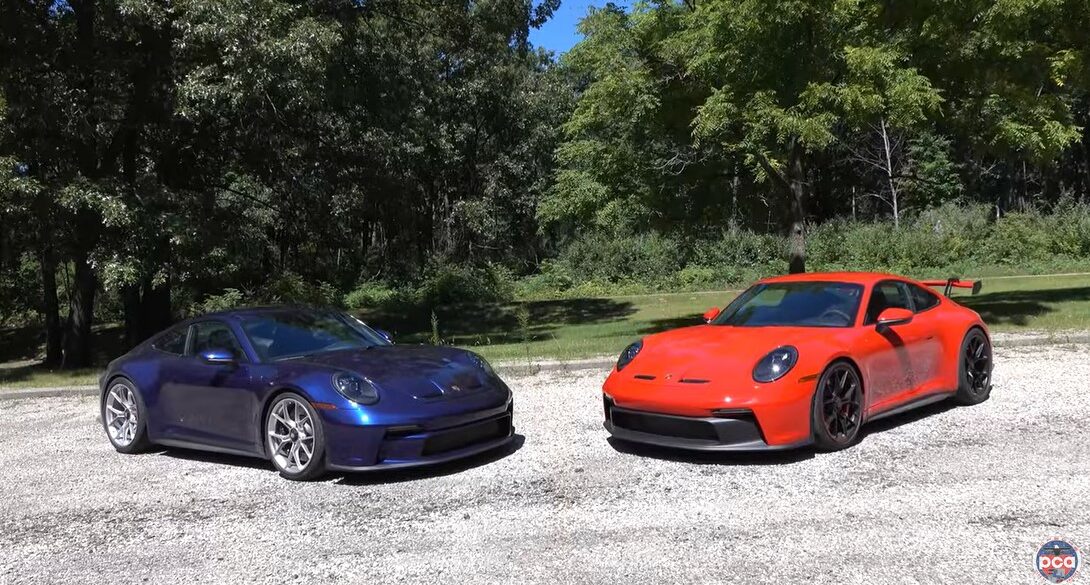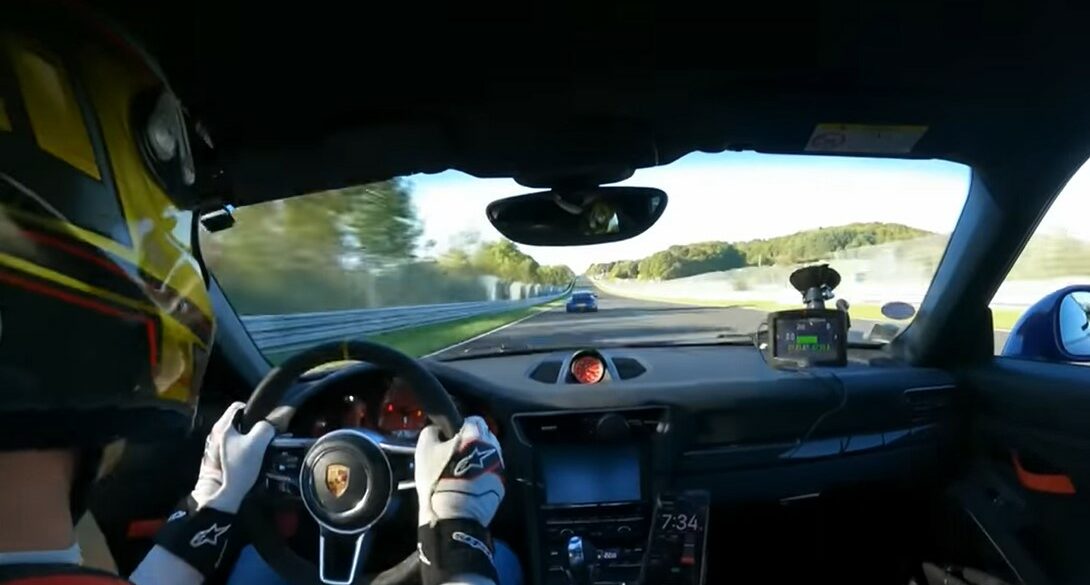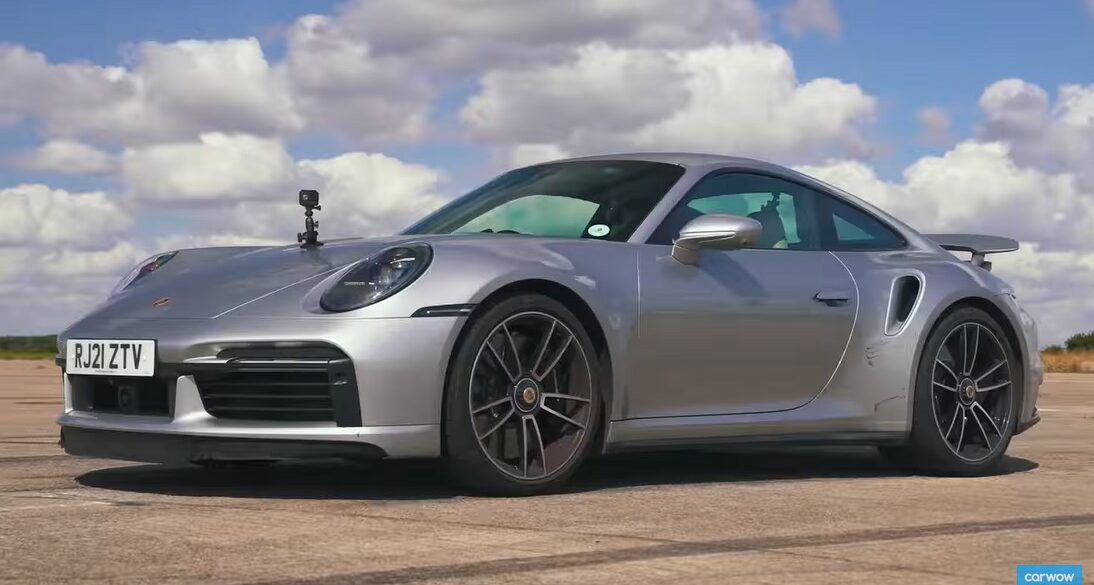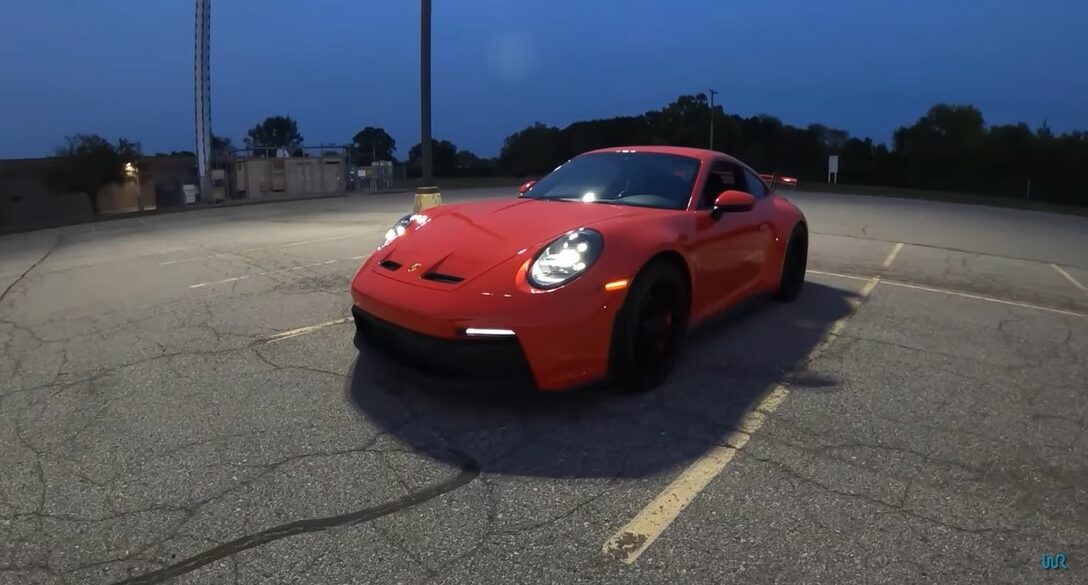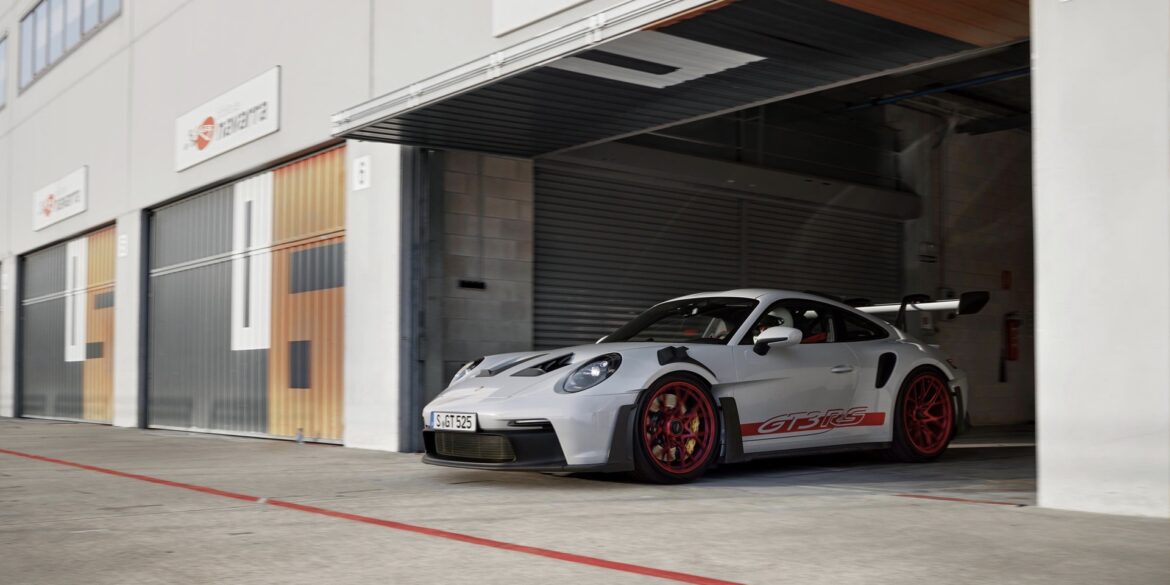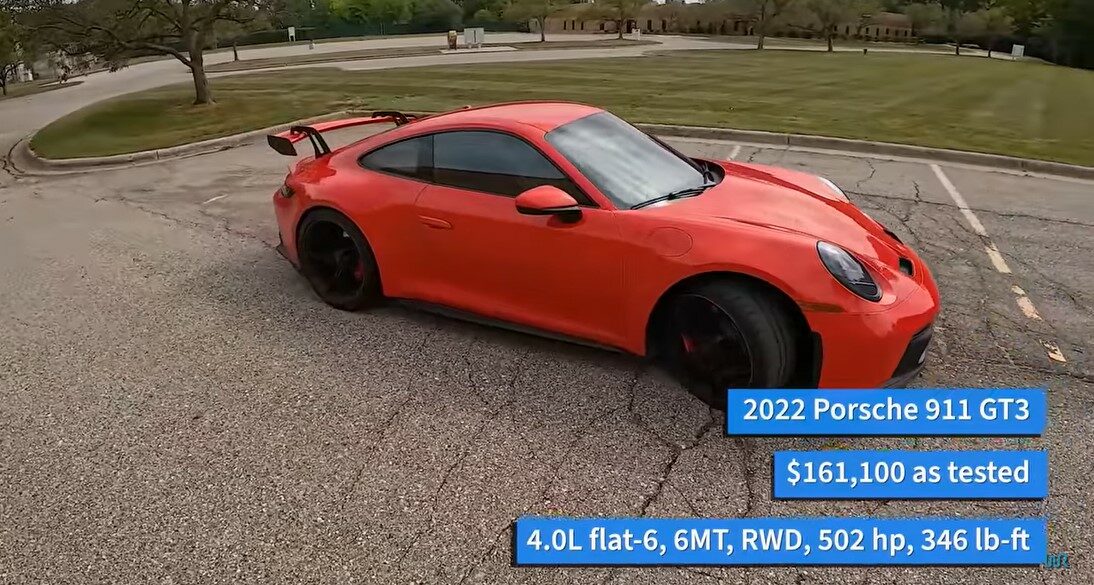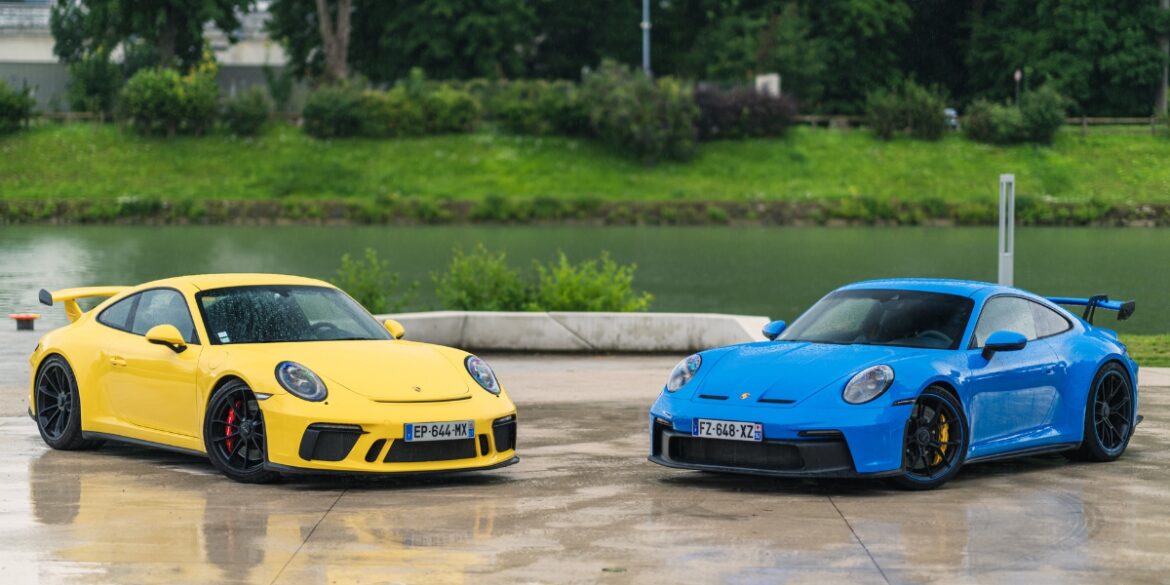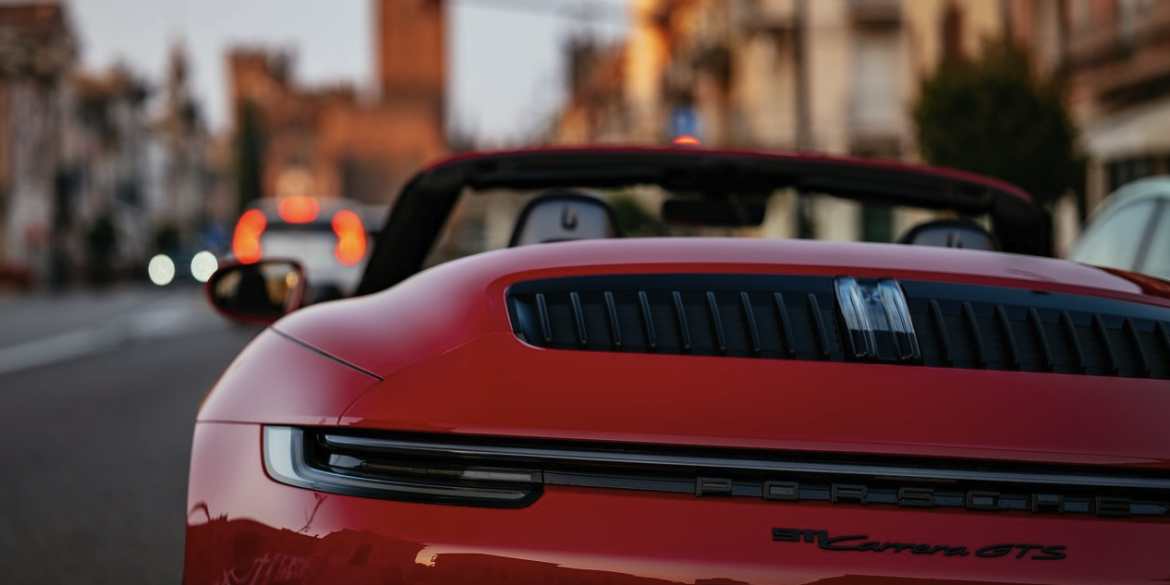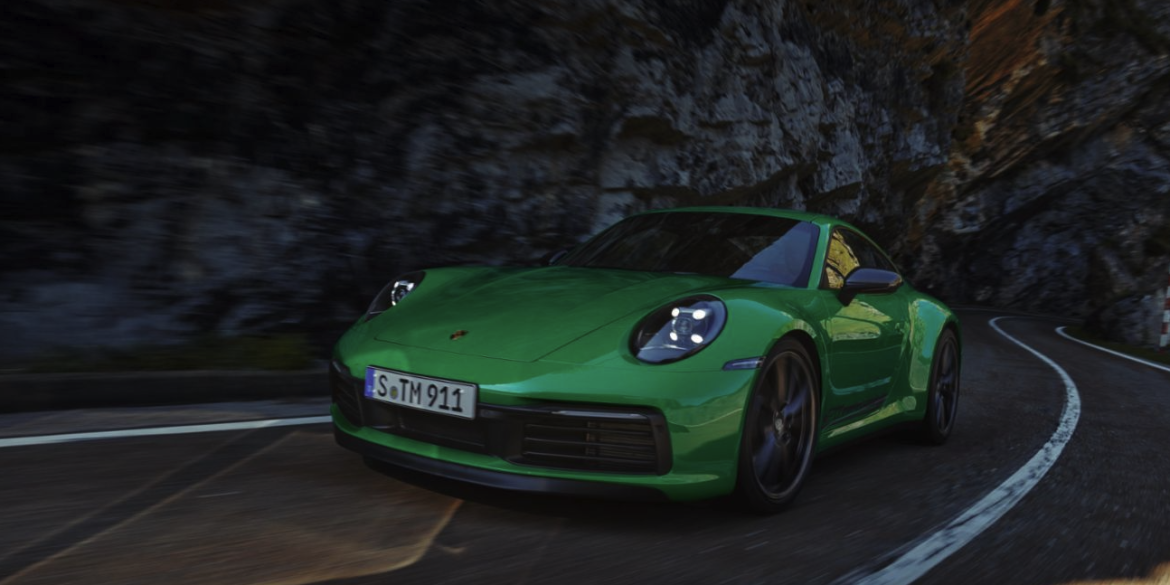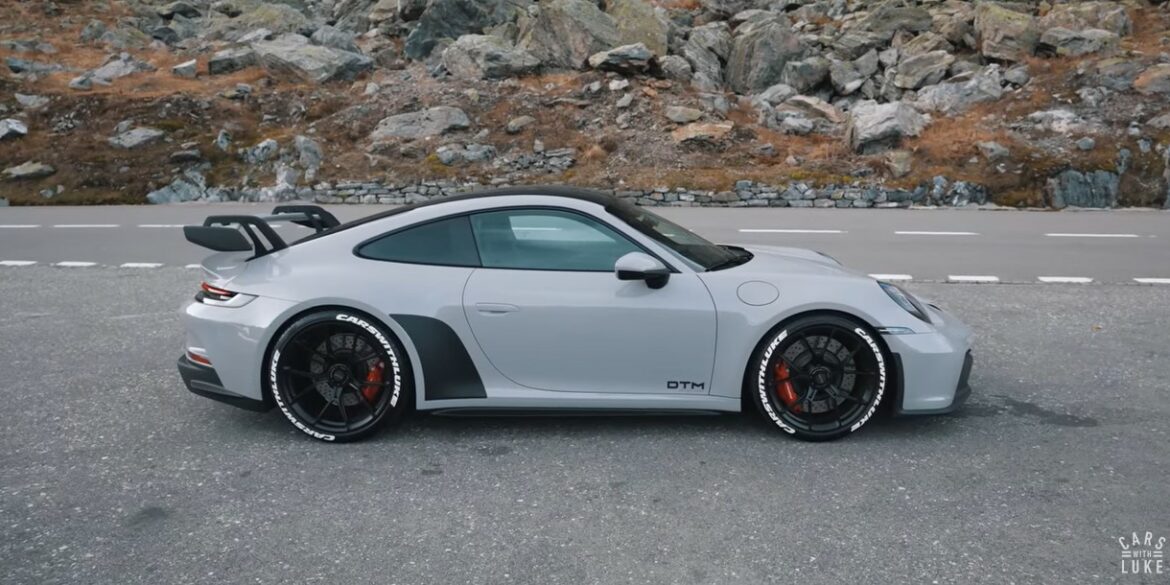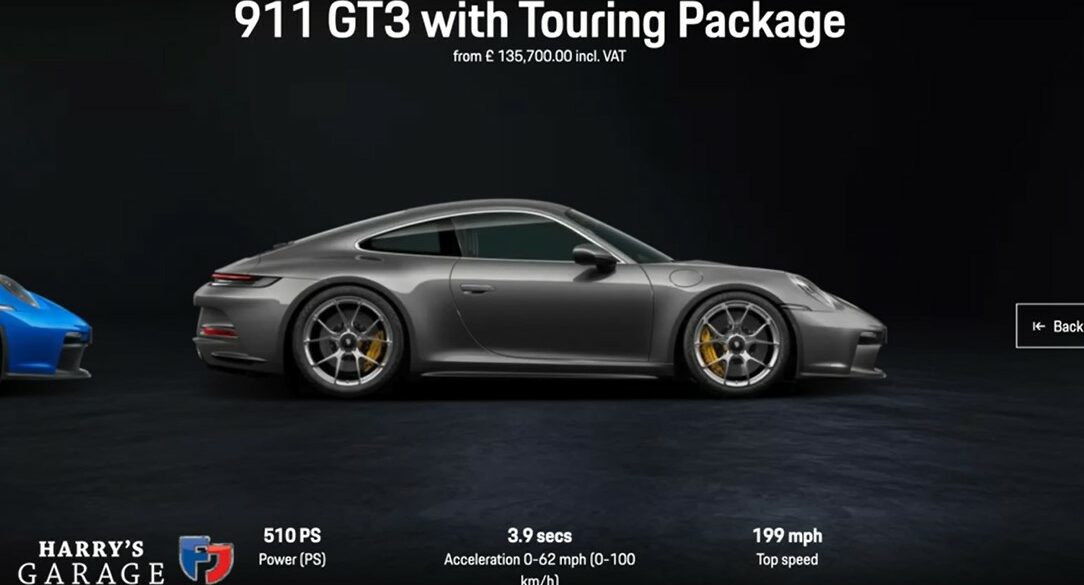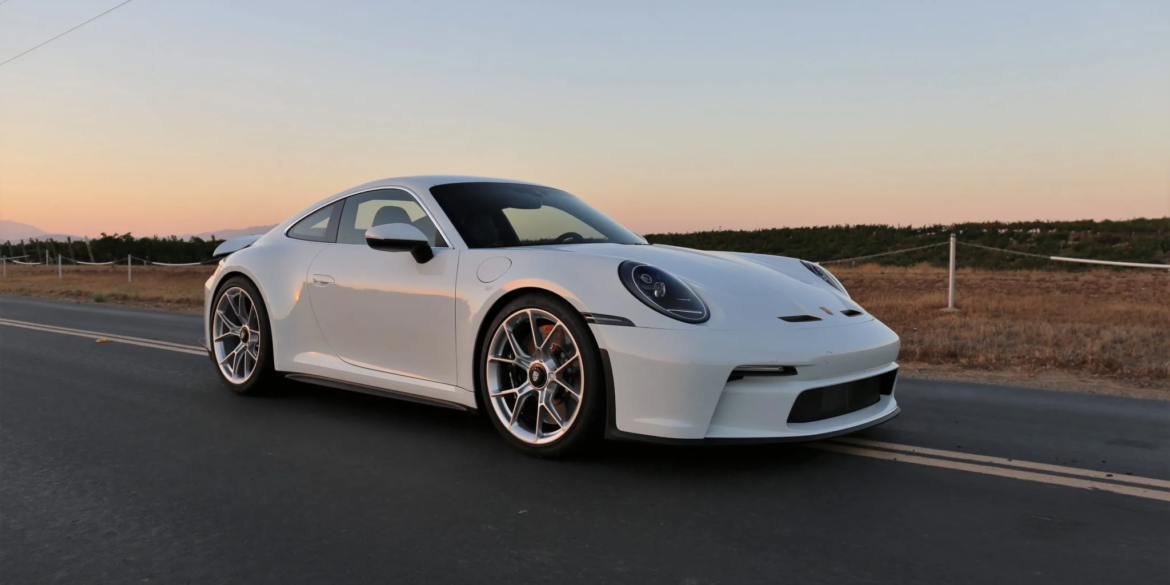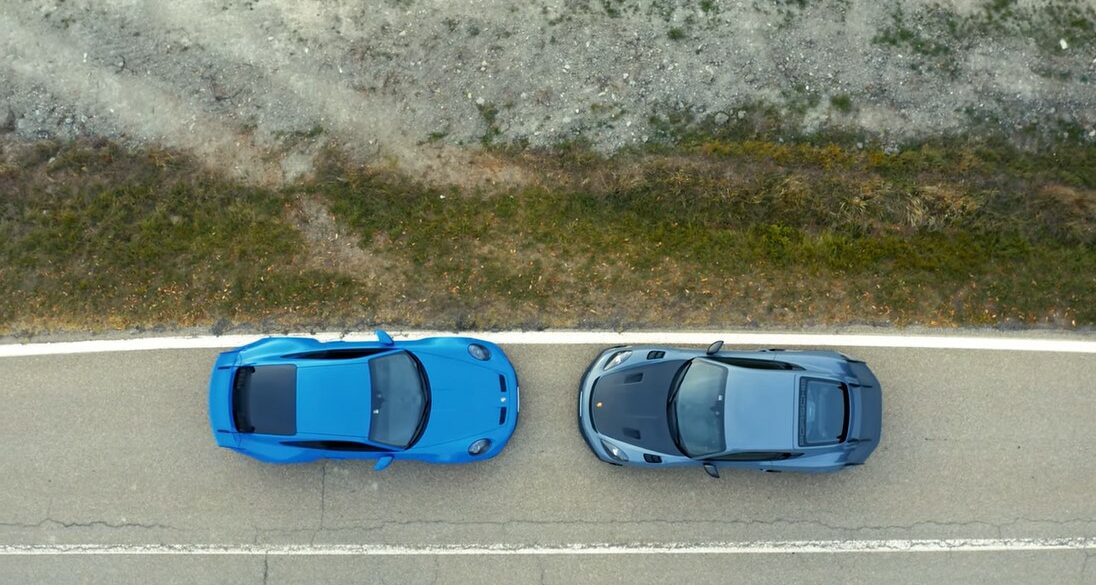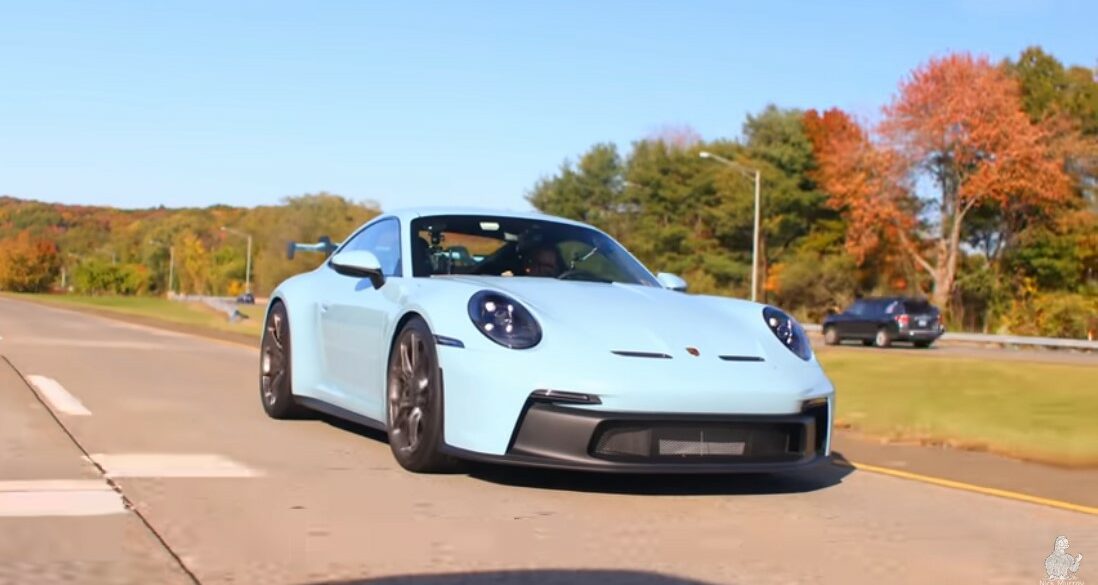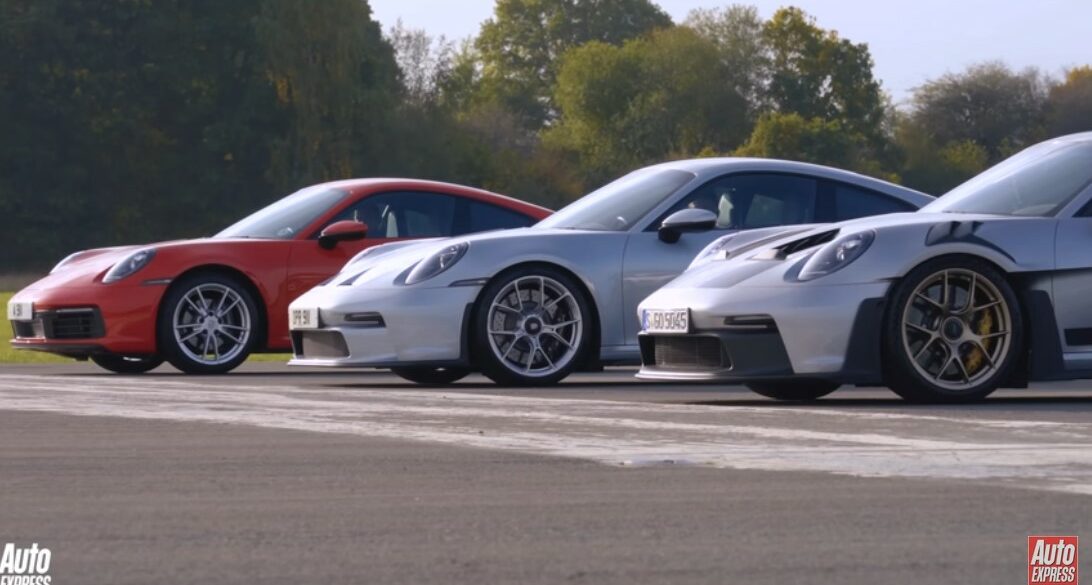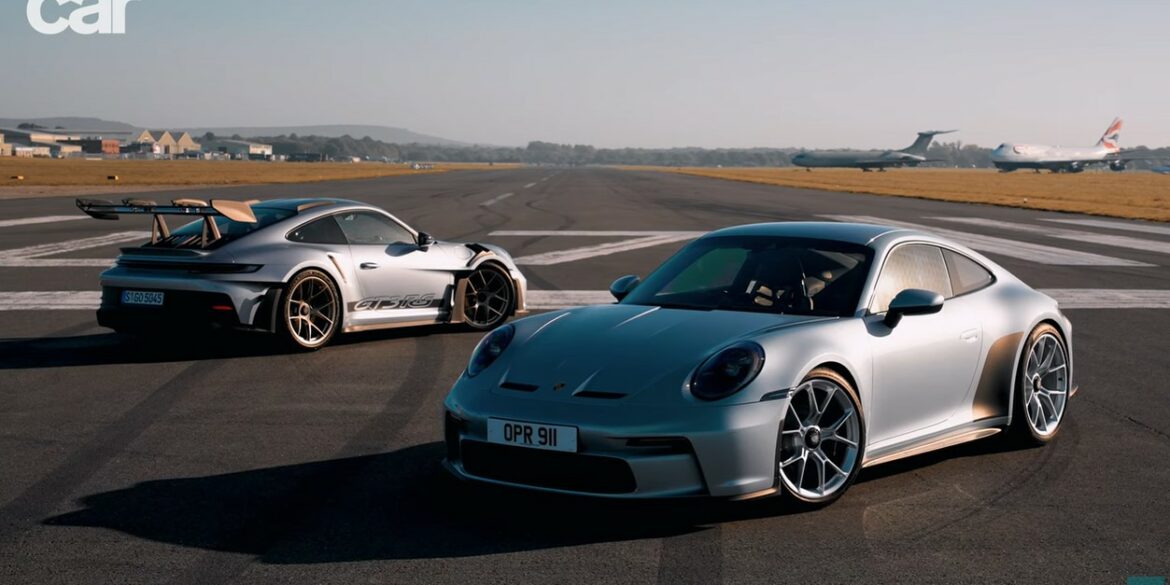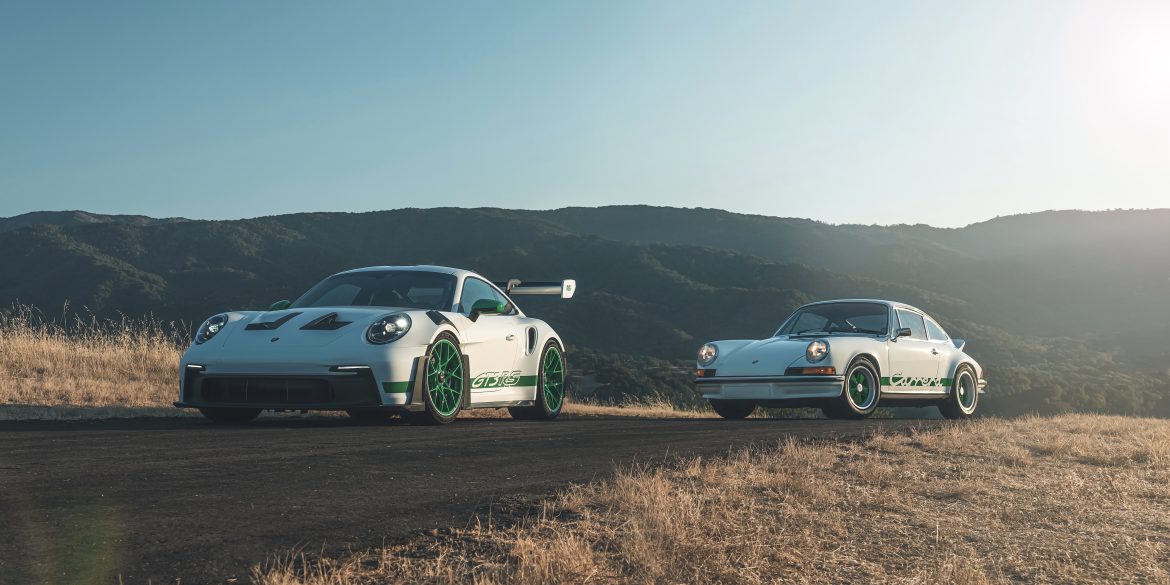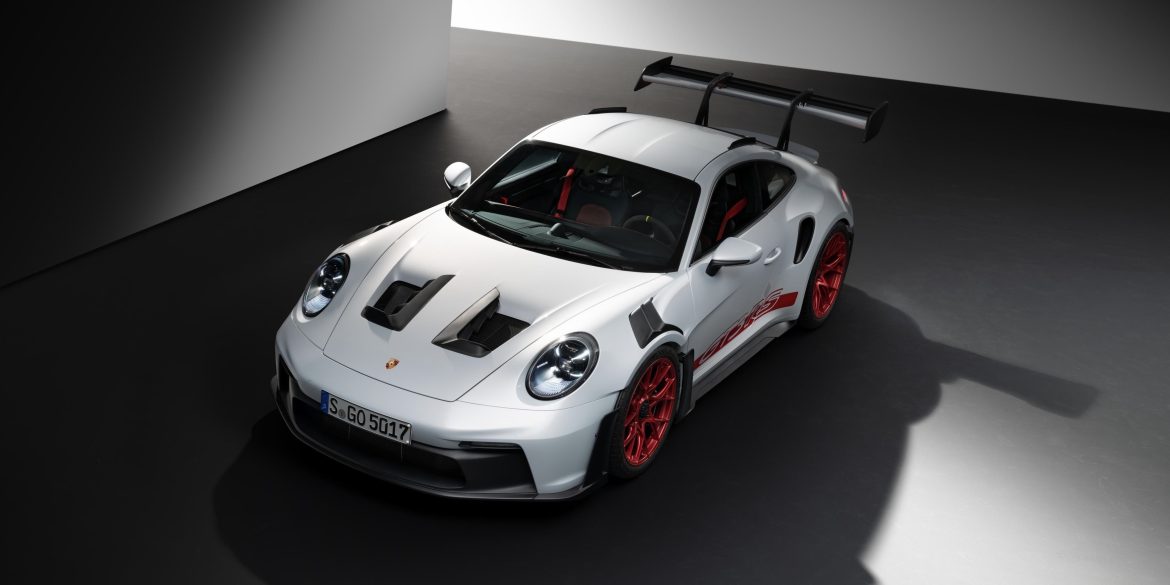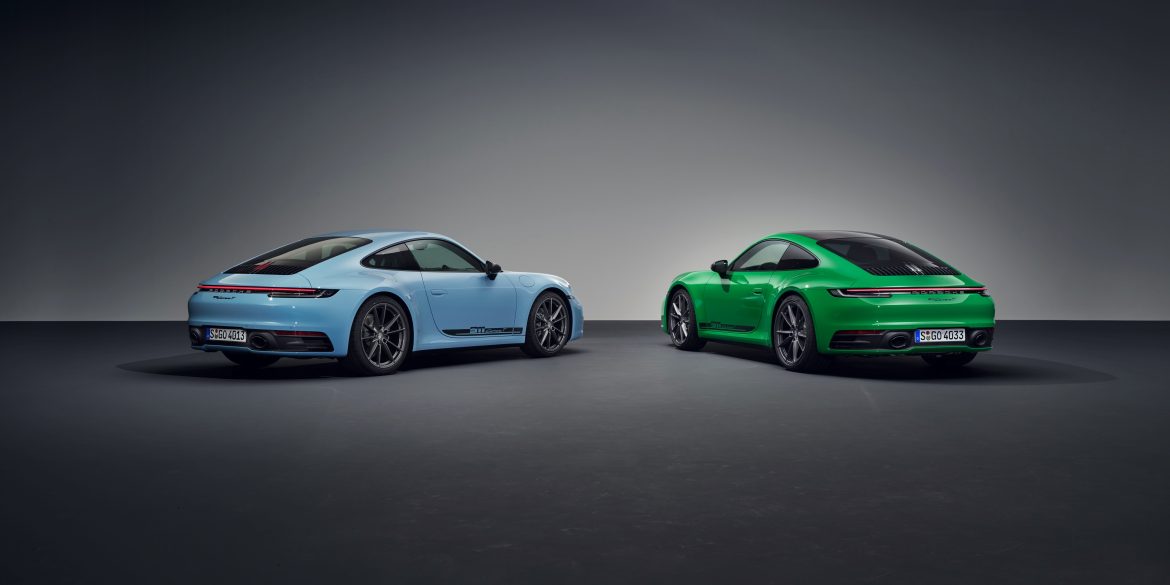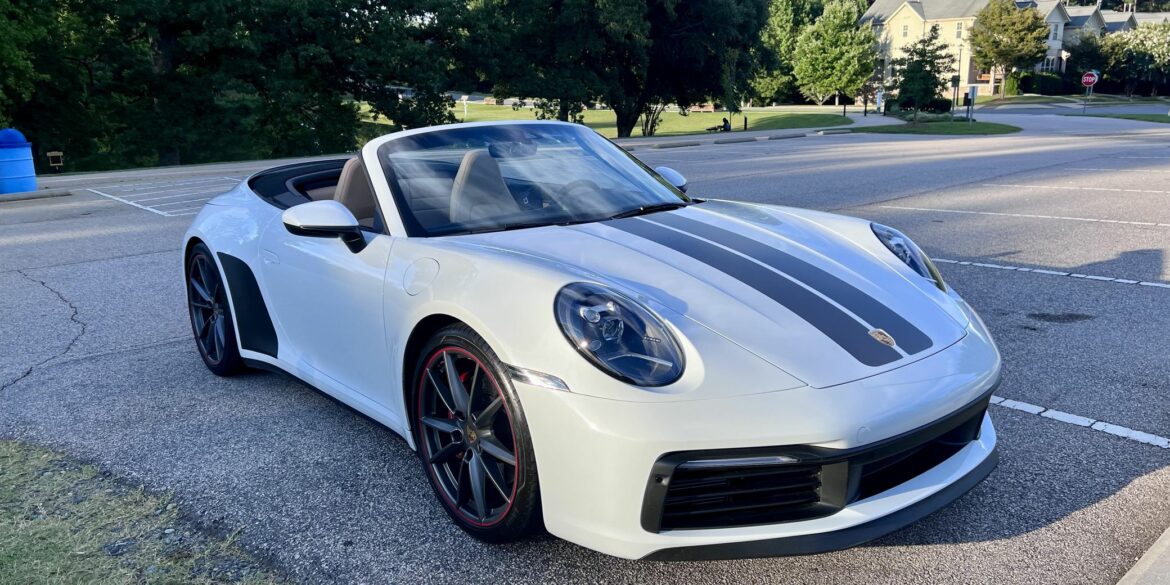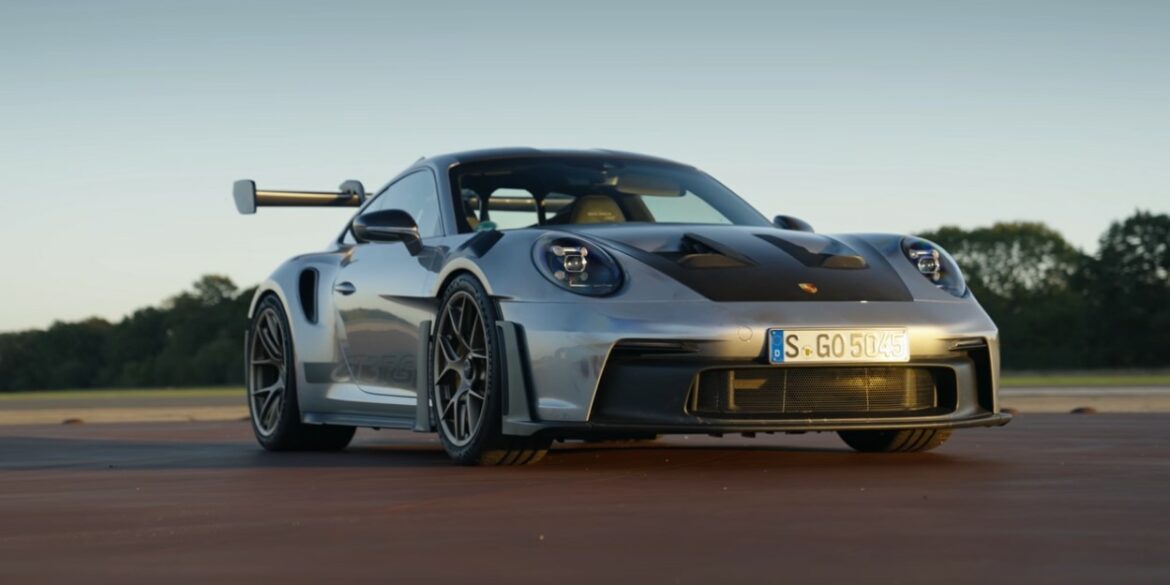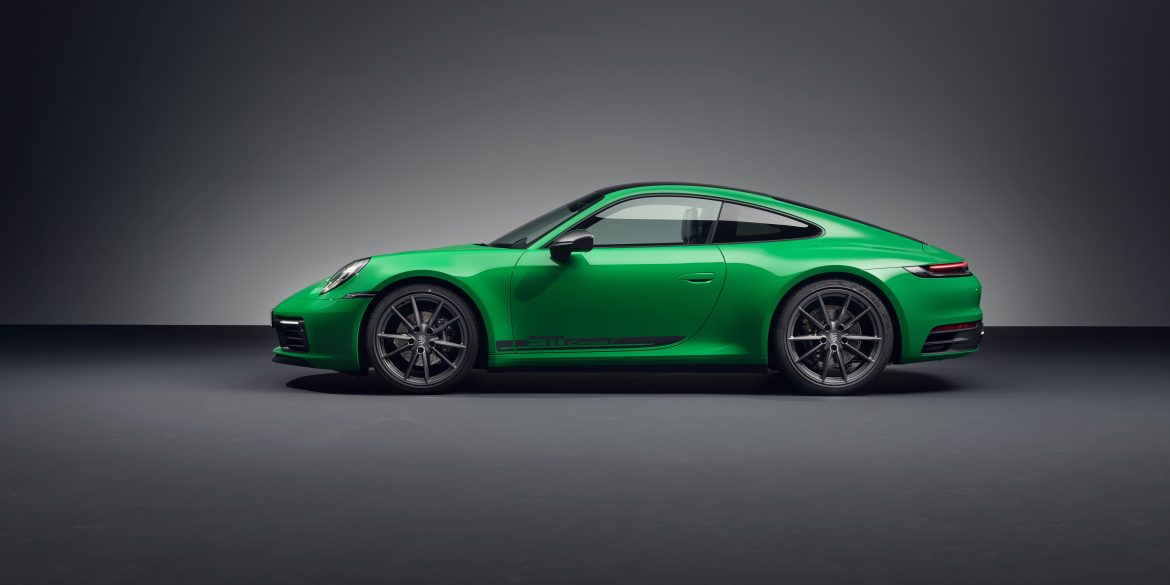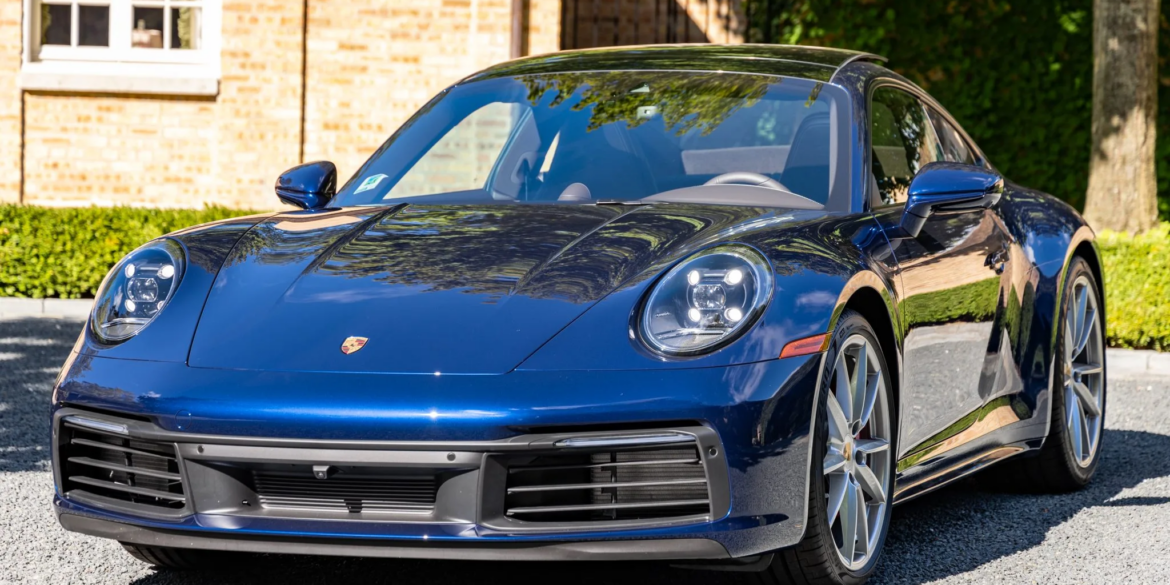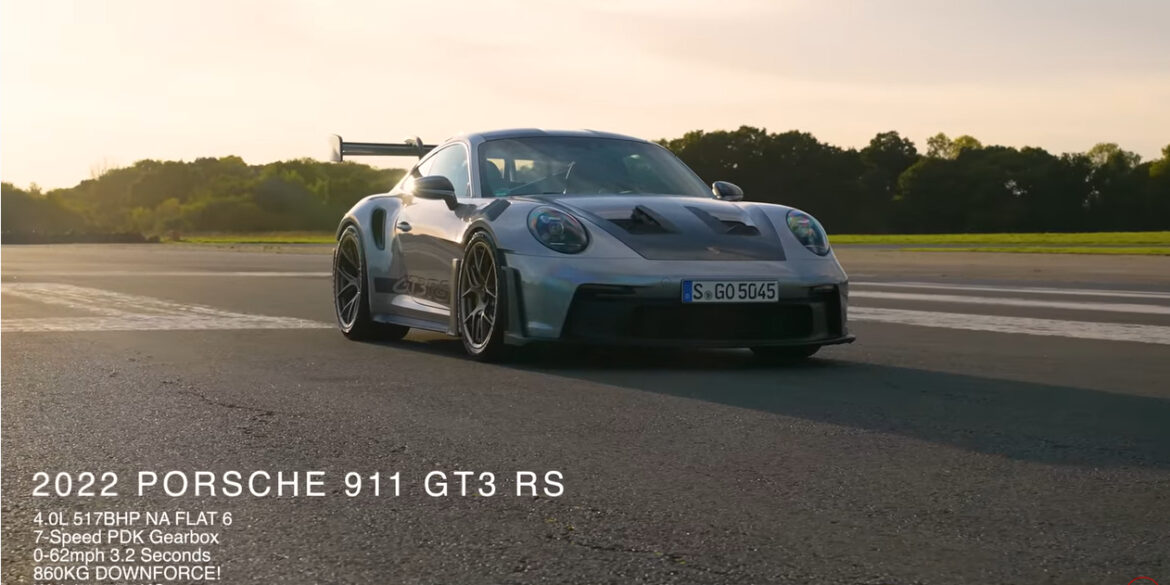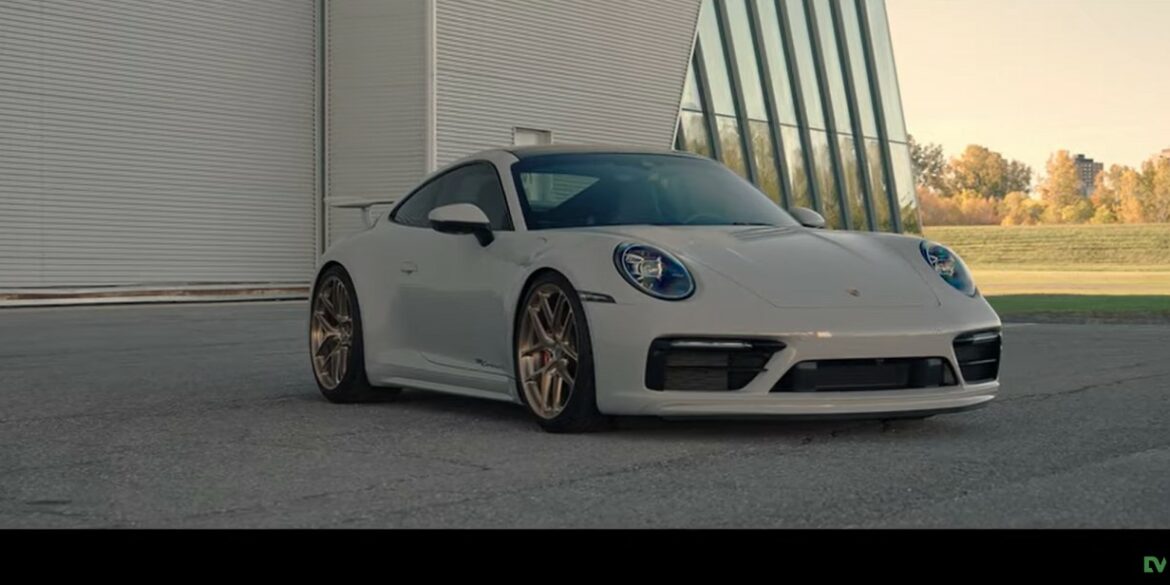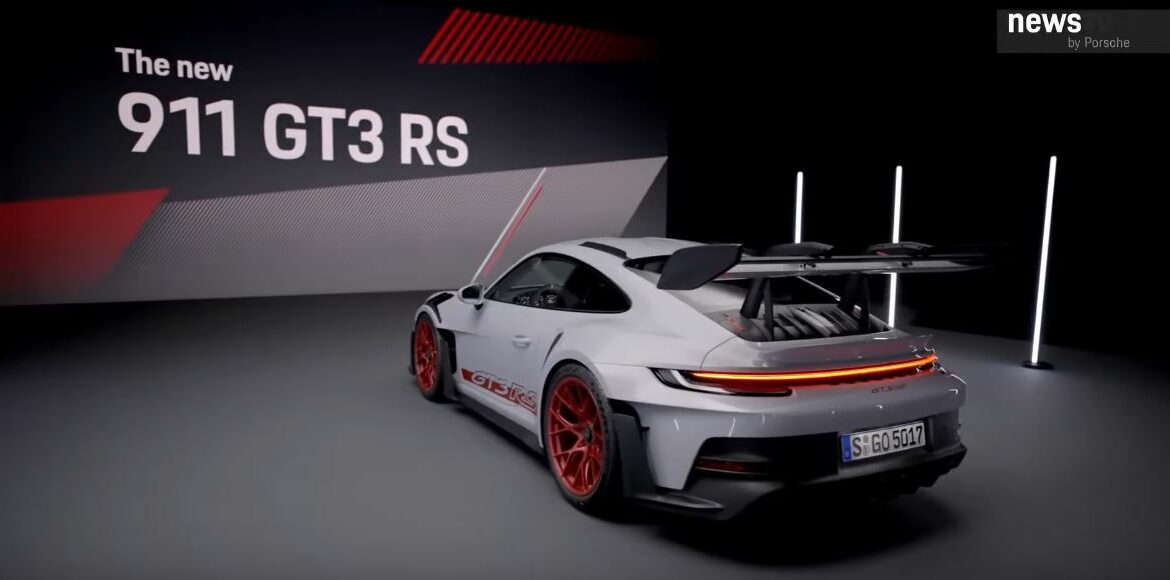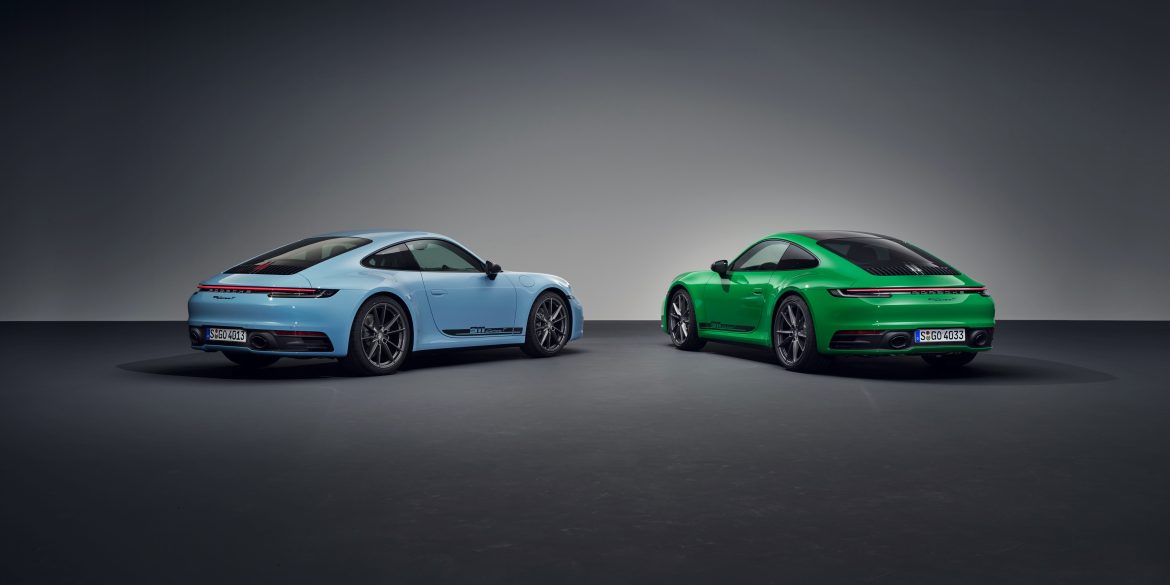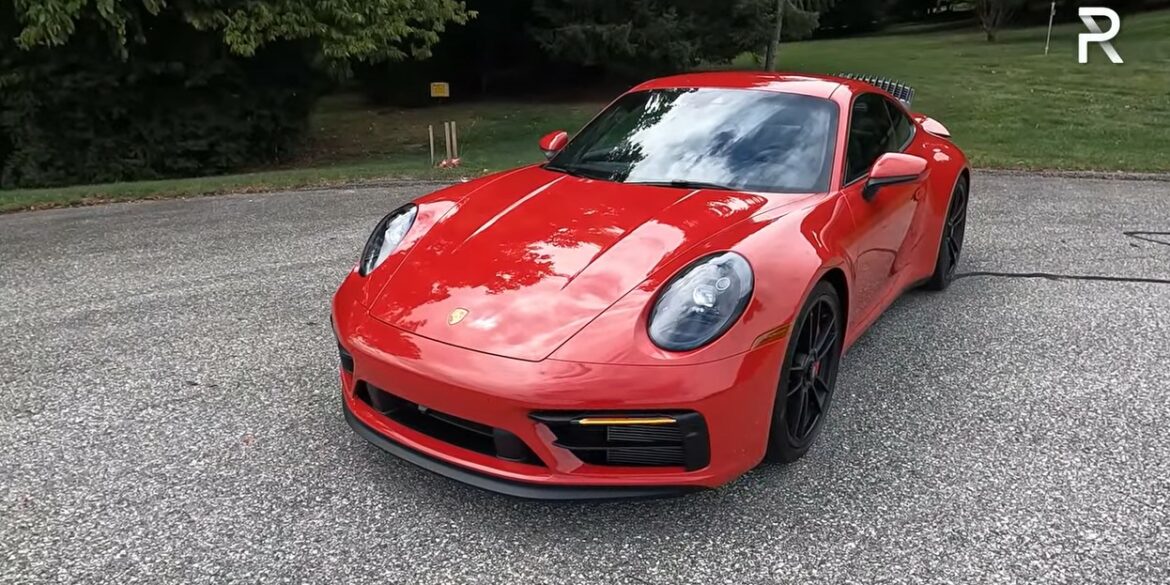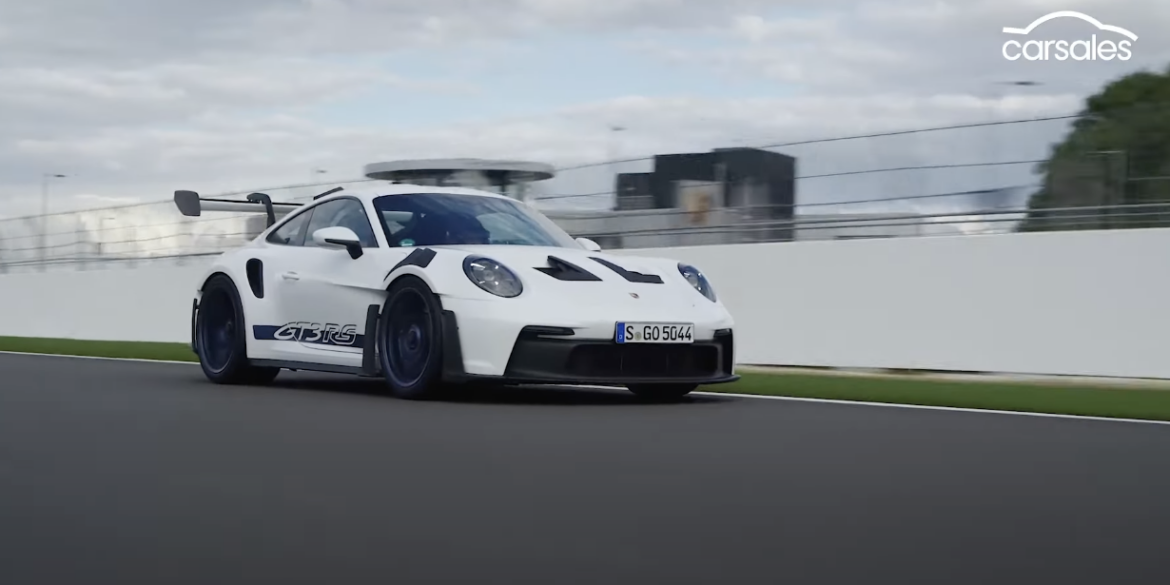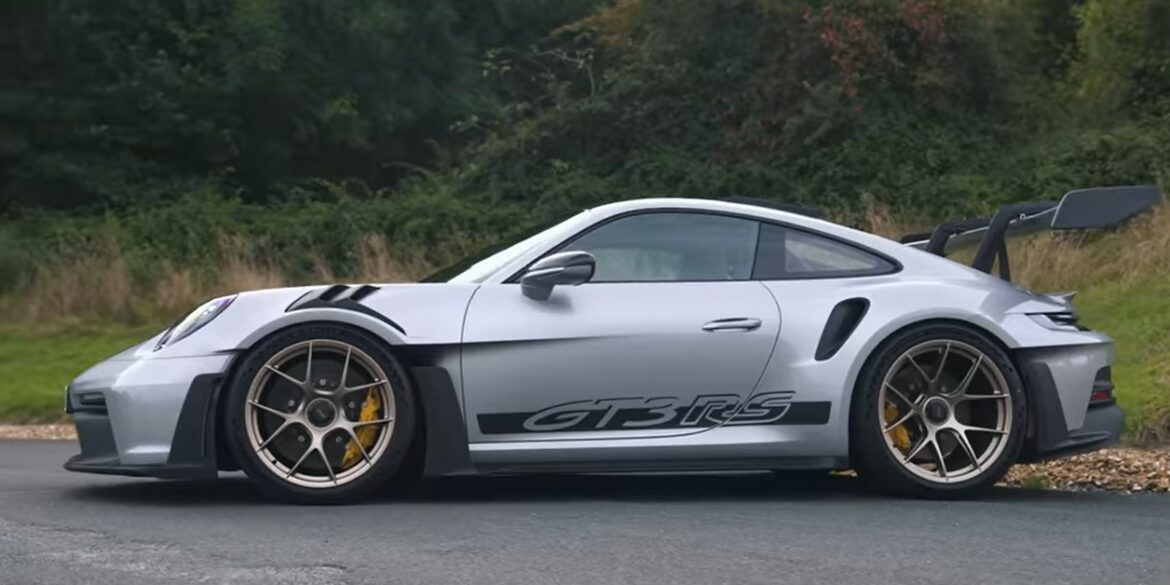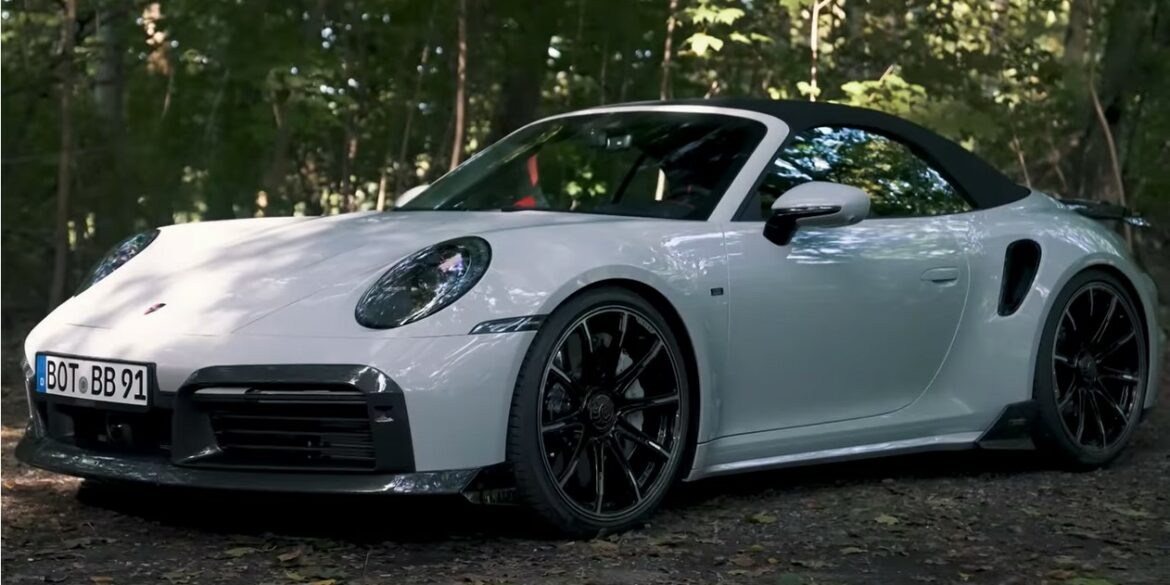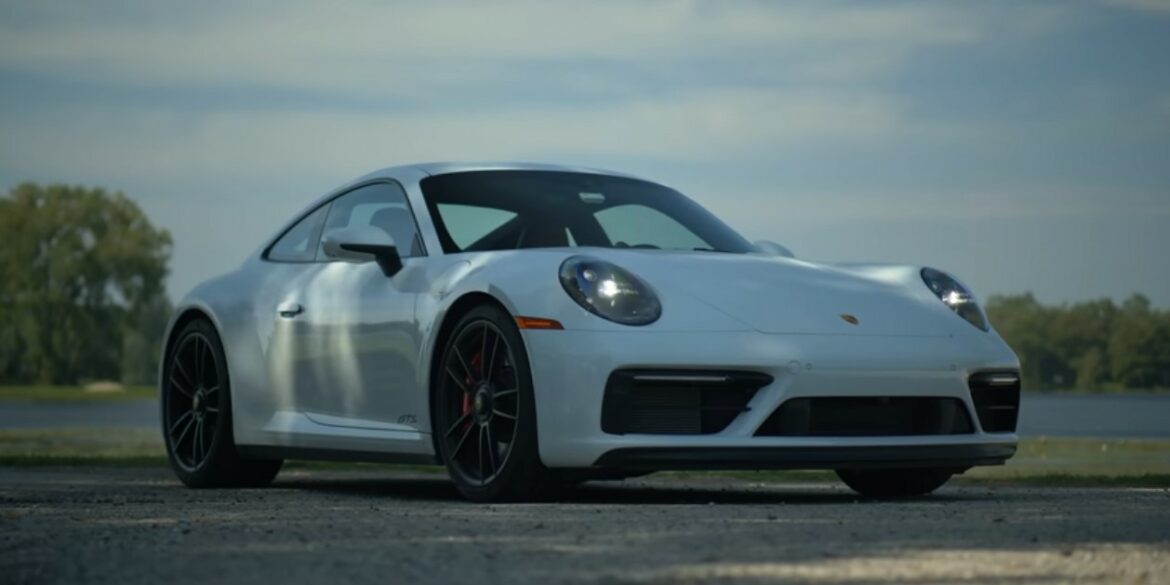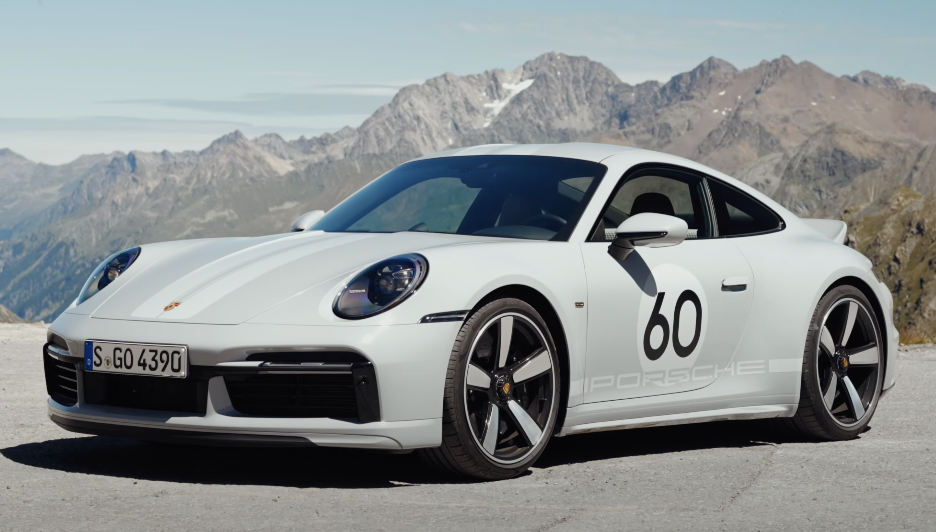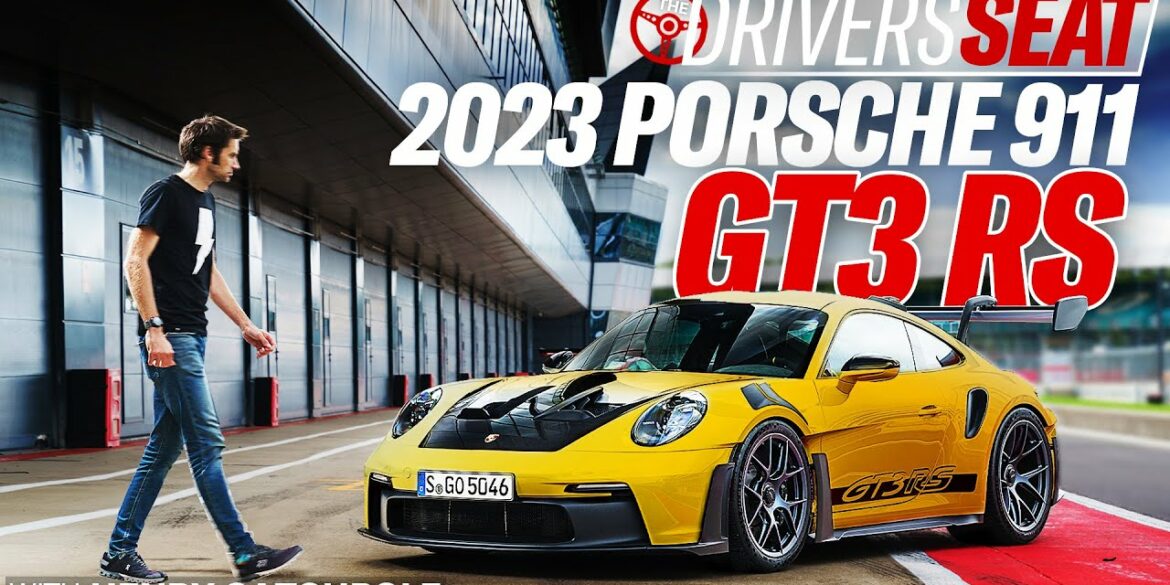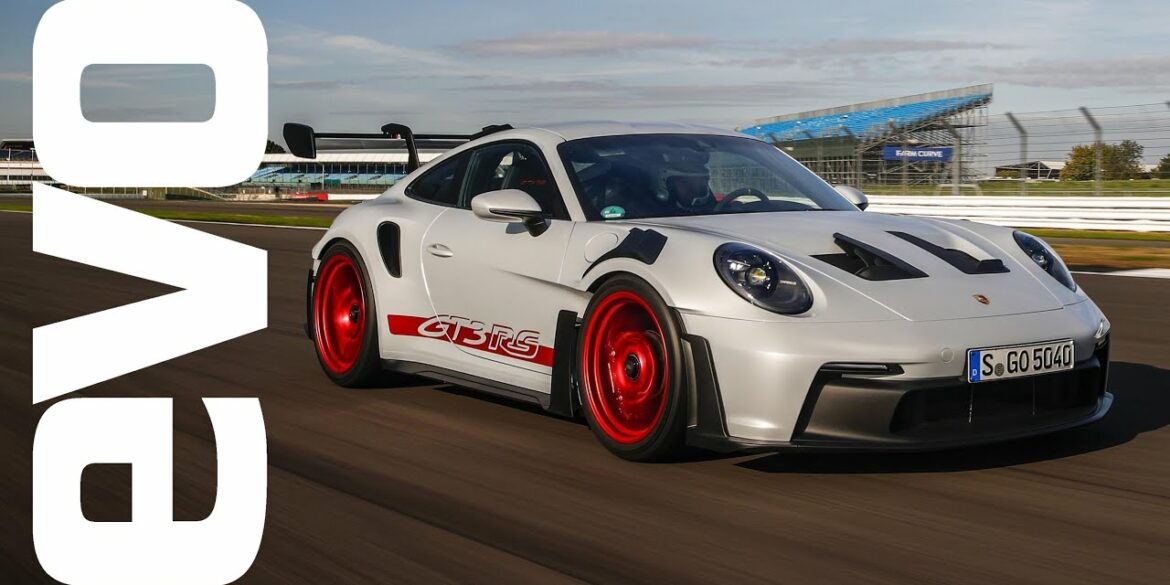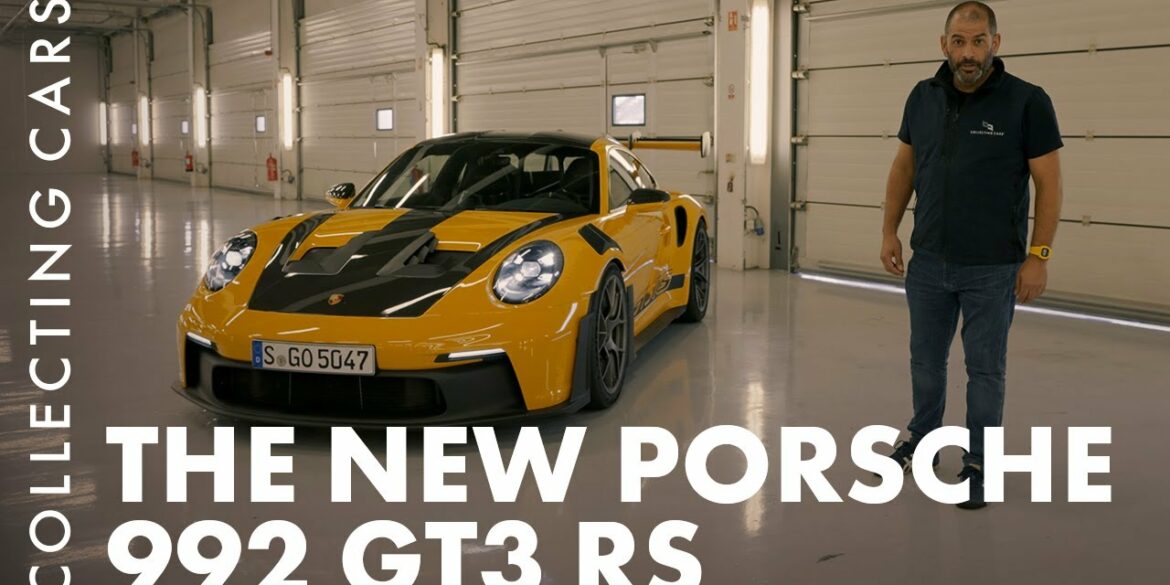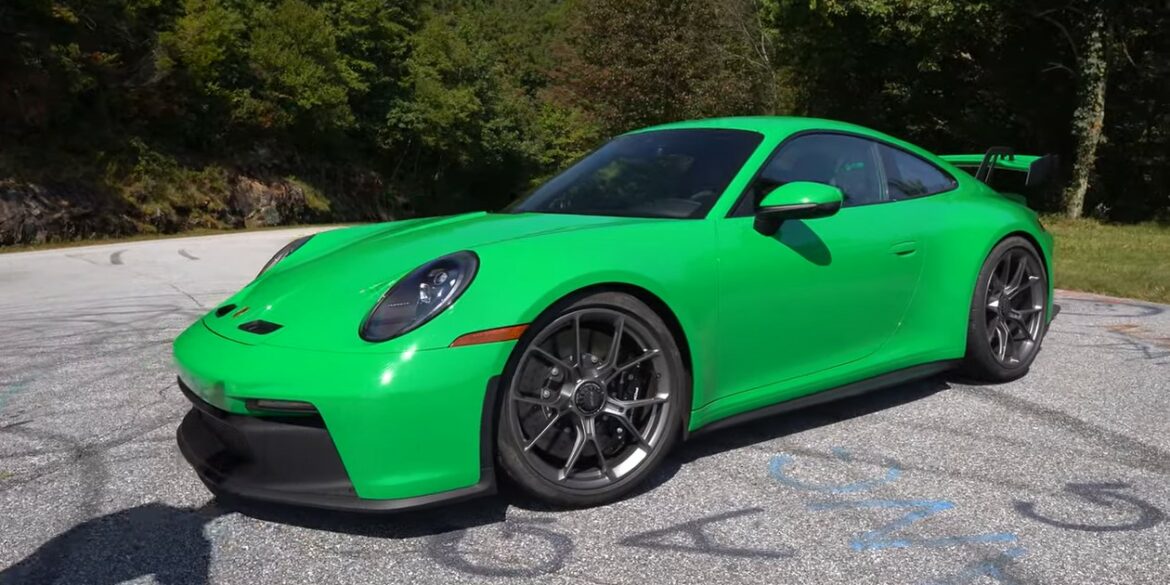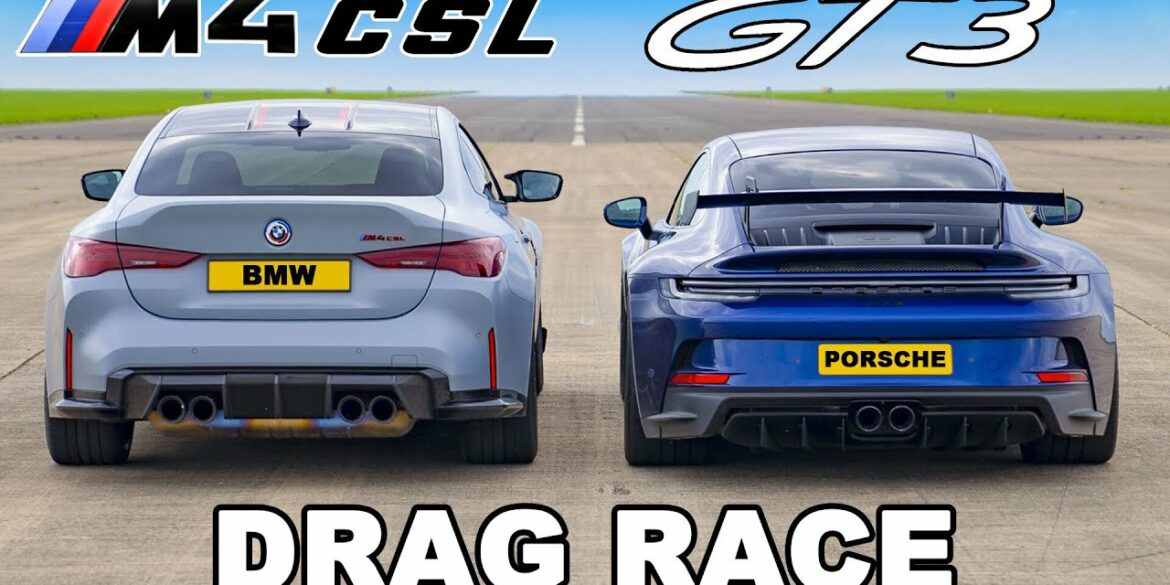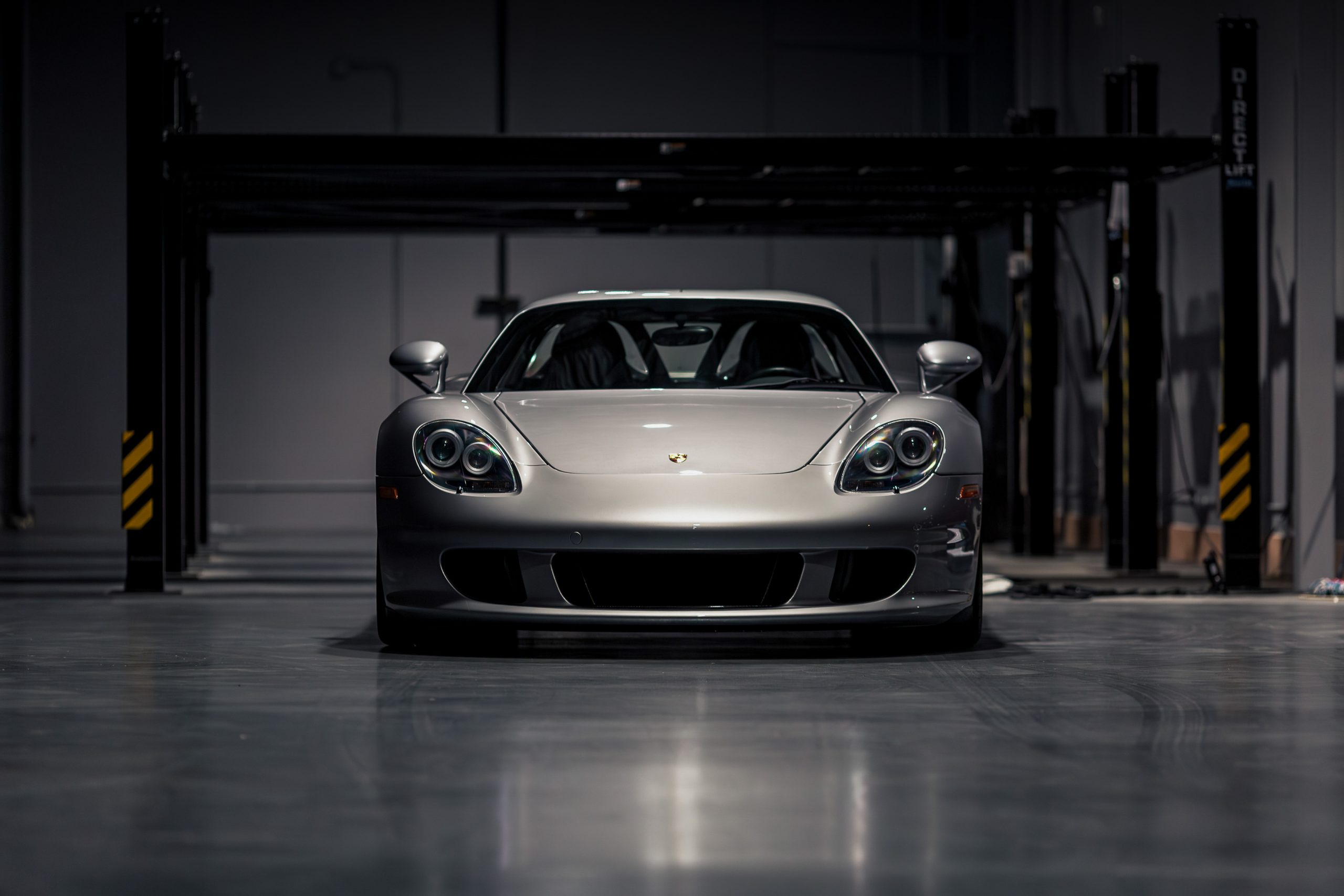It is no secret that our favorite Porsche at the moment is the 992 GT3 Touring so when we stumbled on this Arctic Grey 992 GT3 Touring online, we had to share it. It was spotted at Porsche of North Houston....
The 992 Turbo S comes with an all-new, 3.8 liter boxer six with two variable turbine geometry (VTG) turbochargers. The power output is a staggering 640 hp and 590 lbs-ft of torque. In keeping with previous Turbo models, the engine powers all four wheels. A new 8 speed automatic transmission...
It is no secret when it comes to getting an allocation for a rare, limited-edition supercar, it isn’t just a matter of walking into a dealership with a suitcase full of money, chances are you won’t even be able to buy the car because you aren’t ‘on the list’ at...
Which is faster? Buyers opting for a 992 Porsche 911 GT3 can choose between a 7-speed PDK transmission or a 6-speed manual gearbox. Carwow is here to finally settle this debate and see which is quicker off the line. Two Porsche 911 GT3s that are almost identical except for the...
Direct from CarScoops.com, is news of Porsche’s next “Heritage Design” projects, the ST takes its name from a rare lightweight 911 built for competition in the early 1970s, though Porsche has no plans to race the new car. It follows a similar path to the Sport Classic, cherry-picking some of...
The new Porsche 911 GT3 Cup is the first race car based on the current 911 model series 992. Like everything at Porsche Motorsport, the seventh race car generation is equally as committed to sporting success – it’s a tradition after all. Since 1990, Porsche has built and sold more...
With its astronomical 9,000 rpm redline, the GT3 Touring produces 502 hp @ 8,400 rpm and 346 lb-ft of torque @ 6,250 rpm and should likewise achieve hugely similar, if not identical figures as it pertains to 0-60 mph times and top speed. Like the regular model, the Porsche 911...
The Porsche 911 embodies sports car perfection. It has speed, precision, and is exceedingly fun to drive! On the other hand, the Taycan is a monumental step for the company, a battery-powered, zero-emission sport sedan that drives like a Porsche, is insanely quick and is arguably one of the best...
Pikes Peak is a mountain in Colorado where the annual Race to the Clouds is held. Watch as the Porsche 911 Turbo S take on this challenge....
Get your headphones ready to listen to the great soundtrack of the Corvette Z06 at the Willow Springs race track where it encountered some Porsche GT3s while on track....
Top Gear pits two incredible Porsche machines against each other to see which comes out on top, the Porsche 911 GT3 RS or the Cayman GT4 RS?...
It is time to see if the Porsche 718 Cayman GT4 RS can finally go up against the 911 GT3....
The Porsche 911 GTS goes against the new AMG SL 55, BMW M850i, and Jaguar F-Type R in a cabriolet drag race from CarWow....
Porsche makes sports car history by launching its first publicly available rally car, the $223,450 911 Dakar. After extensive testing, Porsche has settled on a 3.0-liter twin-turbo six-cylinder boxer engine with 473 hp and 420 lb-ft of torque and an 8-speed PDK. True to rally form, an 80-mm suspension lifts the car, along with an optional roof rack and model-specific Pirelli Scorpion all-terrain tires.
Collecting Cars is currently offering an elegant and low mileage example of a 2021 Porsche 911 (992) Targa 4. The car is finished in silver metallic over a a two-tone Slate Grey and Crayon leather-trimmed interior and has only over 10,000 miles on its odometer. Standard equipment includes a satin...
No Subscription? You’re missing out Get immediate ad-free access to all our premium content. Get Started Already a Member? Sign in to your account here....
No Subscription? You’re missing out Get immediate ad-free access to all our premium content. Get Started Already a Member? Sign in to your account here....
No Subscription? You’re missing out Get immediate ad-free access to all our premium content. Get Started Already a Member? Sign in to your account here....
No Subscription? You’re missing out Get immediate ad-free access to all our premium content. Get Started Already a Member? Sign in to your account here....
No Subscription? You’re missing out Get immediate ad-free access to all our premium content. Get Started Already a Member? Sign in to your account here....
No Subscription? You’re missing out Get immediate ad-free access to all our premium content. Get Started Already a Member? Sign in to your account here....
No Subscription? You’re missing out Get immediate ad-free access to all our premium content. Get Started Already a Member? Sign in to your account here....
No Subscription? You’re missing out Get immediate ad-free access to all our premium content. Get Started Already a Member? Sign in to your account here....
No Subscription? You’re missing out Get immediate ad-free access to all our premium content. Get Started Already a Member? Sign in to your account here....
No Subscription? You’re missing out Get immediate ad-free access to all our premium content. Get Started Already a Member? Sign in to your account here....
No Subscription? You’re missing out Get immediate ad-free access to all our premium content. Get Started Already a Member? Sign in to your account here....
No Subscription? You’re missing out Get immediate ad-free access to all our premium content. Get Started Already a Member? Sign in to your account here....
No Subscription? You’re missing out Get immediate ad-free access to all our premium content. Get Started Already a Member? Sign in to your account here....
No Subscription? You’re missing out Get immediate ad-free access to all our premium content. Get Started Already a Member? Sign in to your account here....
No Subscription? You’re missing out Get immediate ad-free access to all our premium content. Get Started Already a Member? Sign in to your account here....
No Subscription? You’re missing out Get immediate ad-free access to all our premium content. Get Started Already a Member? Sign in to your account here....
No Subscription? You’re missing out Get immediate ad-free access to all our premium content. Get Started Already a Member? Sign in to your account here....
No Subscription? You’re missing out Get immediate ad-free access to all our premium content. Get Started Already a Member? Sign in to your account here....
No Subscription? You’re missing out Get immediate ad-free access to all our premium content. Get Started Already a Member? Sign in to your account here....
2023 Porsche 911 Carrera GTS Cabriolet Technical Specifications Model 911 Carrera GTS Cabriolet Design and cylinders Twin-turbo boxer 6 Number of cylinders 6 Fuel grade 98 Bore 91.0 mm Stroke 76.4 mm Displacement 2,981 cc Max Power 473 bhp @ 6500 rpm Max Torque 420 ft lbs @ 2300 – 5000...
No Subscription? You’re missing out Get immediate ad-free access to all our premium content. Get Started Already a Member? Sign in to your account here....
No Subscription? You’re missing out Get immediate ad-free access to all our premium content. Get Started Already a Member? Sign in to your account here....
Petrol Pod tries out the Porsche 911 (992) GT3 Touring and used it to do normal every tasks to see how it’ll fare....
Doug DeMuro gets behind the wheel of the 2023 Porsche 911 Carrera T and gives an in-depth review and comparison between the 2023 Porsche 911 Carrera T and the other 911 models....
Nick Murray goes behind the wheels of the 992 generation Porsche Turbo S to see if the fastest 911 is worth the price tag....
It is Raiti’s Rides turn to do a pretty extensive walkaround, drive test, and review the newest 2022 Porsche 911 GT3....
Misha Charoudin and Uwe Alzen take the Phoenix Racing Porsche Carrera S Cup for a couple of spins around the Nürburgring....
A short review and comparison of the new Porsche 911 Carrera T from Chasing Cars....
Join Nick as he talks about the difference between a regular Porsche 911 992 GT3 and a GT3 Touring....
2023 Porsche 911 Dakar (992) Technical Specifications Tech Specs Model 992 911 Dakar Production Units 2500 (limited) Motor Bore 102.0 mm Stroke 81.5 mm Displacement 3,996 cc Max. power 518 hp Max. power at rpm 8,500 rpm Max. engine speed 9,000 rpm Max. torque 342 lb-ft Max. torque at rpm...
2023 Porsche 911 Dakar (992.1) Pictures & Gallery 2023 Porsche 911 Dakar (992) Pictures & Gallery...
It is Savage Geese’s Mark and Jack’s turn to review the fantastic 2023 Porsche 911 Carrera T and see what they think!...
If you are lucky enough to get an allocation on a 992 GT3, you should do whatever you can in your power to buy it. It is that good. What is sad of course, is that getting an allocation is almost impossible and the slots are selling for $50-$100k over...
The Targa 4’s main feature is its unique sunroof panel that allows you to enjoy this Porsche almost all year round. Add all-wheel drive and the sexiest design in the business, and this is the posers Porsche 911. The Targa 4 gets the same powertrain as the base 911s, a...
A really comprehensive and detailed interior and exterior walkaround and test drive on the 2023 911 Carrera T, the newest sports car from Porsche....
Motor1’s Brett Evans gets behind the wheel of the 2023 Porsche 911 Carrera T and test drives the newest sports car from Porsche....
Miles takes the 2023 Porsche 911 Carrera T Manual for a test drive and gives his expert review about this gorgeous new Porsche....
As part of Fifth Gear’s 20th Anniversary, they pit the 20-year-old Porsche 911 Turbo (996) against the 911 Carrera (992)....
The TechArt GTstreet R is a much improved version of the Porsche 911 Turbo thanks to a custom body kit and 3.8L twin turbocharged flat 6 engine. The new body uses a lot of carbon fiber components and was exclusively developed in the wind tunnel. Although some people may not...
Praised by many car magazines as one of the most complete 911s, the 992 Porsche 911 Turbo S boasts incredible performance thanks to its highly potent turbocharged Flat 6 engine, all-wheel drive chassis, and revised air intake system. Collecting Cars is currently offering a desirable 2021 Porsche 911 Turbo S...
2023 Porsche 911 Dakar Announced The latest 911 model variant proves its mettle where the pavement ends Atlanta. Porsche is celebrating a very special world premiere at the Los Angeles Auto Show – the new Porsche 911 Dakar, which feels equally at home on loose surfaces as it does on country...
Introducing the new off-road rally sports car which will be limited to only 2,500 examples, the Porsche 911 Dakar....
First look at the newest limited edition Porsche 911 Dakar – an off-road version of the 992 GTS, of which only 2,500 examples will be built....
Porsche Club of America compares the Porsche 992 GT3 and the one with the Touring Package. Is there a noticeable difference?...
A race at the Nurburgring between a Porsche 991 GT3 RS, 992 GT3 MR, Cayman GT4 RS, and a BMW M3 CS DM Performance....
Watch Carwow do what they do best and it is pitching two exquisite cars against each other. This is a drag race between a Porsche 911 Turbo S and a Ferrari SF90....
Get your earphones ready to fully enjoy this video’s binaural audio of the 2022 Porsche 911 GT3 night drive....
Arguably the most extreme 911 to be build as a production car for the road and track. The most significant improvements made to the RS—over both the 992 GT3 and the previous-gen 991 GT3 RS—were applied to the aerodynamics and chassis departments of the car. The new 911 GT3 RS is even more optimized for track use than its predecessors. The spontaneously responsive, high-revving four-litre, six-cylinder boxer engine has proven ideal for use at track days and club sport events.
Winding Road Magazine did a test drive on the 2022 Porsche 911 GT3. Make sure you have your earphones for this video!...
Sport Auto’s Christian Gebhardt tests the Porsche 911 GT3 (992) against the BMW M4 CSL on the Hockenheim-GP track....
Porsche 911 GT3 Buyer’s Guide (991 & 992) Over the past 2 decades, the Porsche 911 GT3 models—and their variants, such as the RS and Speedster—have gone on to establish a reputation as the world’s quintessential sportscars. The lengths to which the GT3 has blurred the lines between street car...
2023 Porsche 911 Carrera GTS Cabriolet America Edition (992.1) Technical Specifications Model 911 Carrera GTS Cabriolet America Edition Design and cylinders Twin-turbo boxer 6 Number of cylinders 6 Fuel grade 98 Bore 91.0 mm Stroke 76.4 mm Displacement 2,981 cc Max Power 473 bhp @ 6500 rpm Max Torque 420 ft lbs...
2023 Porsche 911 Carrera T (992.1) Technical Specifications Model 911 Carrera Carrera T Design and cylinders Twin-turbo boxer 6 Number of cylinders 6 Fuel grade 98 Bore (PDK (Automatic)) 91.0 mm Stroke (PDK (Automatic)) 76.4 mm Displacement (PDK (Automatic)) 2,981 cc Max. power (PDK (Automatic)) 379 hp Max. power at...
Watch Luke on his first drive in his Porsche GT3 and as he spends it with fellow petrolheads....
Join Harry as he tests to see the difference between a Porsche 992 GT3 Touring and a regular GT3....
Porsche has continued the use of the naturally-aspirated 4.0L 9A1 flat-6 power plant in the 2022 Porsche 911 GT3, with that engine carrying over untouched in the GT3 Touring. With its astronomical 9,000 rpm redline, the GT3 Touring produces 502 hp @ 8,400 rpm and 346 lb-ft of torque @ 6,250...
Join Mark as he takes the Porsche GT4 RS and the 992 GT3 for a spin around the Italian Mountains to see which of the awesome cars would come out on top....
Nick Murray gets behind the wheel of the Porsche GT3 911 (992 Gen) and shows off the features of the fantastic car....
The 911s battle it out against each other to see the difference between the Carrera, the GT3, and the new Porsche 911 GT3 RS in terms of performance....
Watch CAR Magazine’s James Dennison as he breaks down the features of the Porsche 911 GT3 RS and takes it for a spin....
Tribute to the 2.7 RS Porsche 911 GT3 RS (992.1) Pictures & Gallery...
2023 – 2025 Porsche 911 GT3 RS (992.1) Pictures & Gallery...
2023 – 2024 Porsche 911 Carrera T (992.1) Pictures & Gallery...
Top down summertime driving in the current Porsche 911 Carrera 4S Cabriolet is about as good as it gets. The flat six sounds great (especially with the optional sports exhaust), there is tons of torque on tap at any speed and rpm and the handling is superb. The current Carrera...
It is Auto Trader’s Rory Reid’s turn to enjoy – review – the newest supercar masterpiece from Porsche, the new Porsche 911 GT3 RS....
The return of the Touring badge, now on the Type 992. In a way, the car may seem sparingly equipped, and apart from the paint color, the wheels, and if you want a 7-speed manual or 8-speed PDK, it is. But it’s what it’s equipped with that makes the Porsche drivers smile. The purist-focused Carrera T is perfectly specced for fun, with its sweet rear-wheel drive, no rear seats, and a manual gearbox for just $118,050.
Porsche announced the Tribute to Carrera RS Package for the new 911 GT3 RS. Unfortunately, it will only be available for the U.S. market. Part of the Tribute to Carrera RS Package includes styling interior and exterior elements unique to the package, an equally unique Porsche Design timepiece, a few accessories, and for the first time ever, a unique NFT program
The current Porsche 911 Carrera 4S utilizes the same engine as the previous generation: a 3.0-liter, twin-turbocharged flat-six. However, thanks to a raft of changes that includes new turbochargers, electric wastegates, new injectors and other fresh bits and baubles, output rises 13 horsepower to 443 and 22 pound-feet of torque...
Watch as the new Porsche 911 GT3 RS enchants James Walker, YouTube’s Mr JWW, as he drives it around the Top Gear track....
Watch Megan Paterson as she talks about her car journey and what led her to the Porsche 911 Carrera 4S, which she has modded beautifully....
Porsche unleashed the 911 GT3 RS at the Nürburgring where it was able to complete a lap for only 6:49.328 minutes with Porsche brand ambassador Jörg Bergmeister at the wheel....
New Porsche 911 Carrera T Porsche just recently announced a new lightweight sports car that will be part of the 911 family, the 911 Carrera T. The “T” in the 911 Carrera T stands for touring, which describes models with outstanding sporty equipment that provides a purist driving experience. As...
It is Redline Reviews’ Editor in Chief Sofyan Bey to turn to give a review of – and fall in love with – the 2022 Porsche 911 Carrera 4 GTS....
Join John Mahoney as he gives a walkthrough of the new Porsche 911 GT3 RS (992) to show its new aerodynamic-focused features. He also takes it for a drive around the track....
Watch Mat fall in love with the Porsche 911 GT3 RS at first sight. See as he really checks out every nook and cranny of the new super sports car, and take it for a test drive to fall in love all over again....
Watch this in-depth review on the interior and exterior design of the first Brabus and Porsche supercar, the Porsche Brabus 911 (720) Turbo S, and how it fared as it was tested on the Autobahn....
Join Mark and Jack as they discuss the details about the Porsche 911 (992) GTS, a great alternative to the GT3. Watch them test it on the Autobahn CC....
Henry Catchpole drove the NEW Porsche 911 Sport Classic for Carfection for a road review. ...
Autocar’s Matt Saunders takes the new Porsche 911 (992) GT3 RS for a spin around the Silverstone circuit to test out the newest track-focused car from Porsche....
It is PistonHeads’ John Howell’s turn to be enamored of the new 2023 Porsche 911 (992) GT3 RS. Watch him as he takes it on a spin around the Silverstone circuit. Enjoy the new 992 soundtrack as well....
The technical aspects and the aerodynamics of the new Porsche 911 (992) GT3 RS was thoroughly discussed in Hagerty’s review of the newest Porsche sensation. Watch as the naturally aspirated engine of the new Porsche makes a fan out of Henry Catchpole....
EVO’s Steve Sutcliffe goes behind the wheel of the newest 992-generation Porsche 911 GT3 RS to test drive it on Silverstone’s Grand Prix circuit. Find out what he has to say!...
Watch Chris as he does a walk-around on the new Porsche 911 (992) GT3 RS to discuss its features, bodywork, and interior. Join him as he takes it for a spin around Silverstone....
Watch Joe excitedly go over all the bells and whistles in the new 2022 Porsche 911 GT3. It is a great review where he went over almost every inch of the 911....
BMW M4 CSL vs Porsche 911 GT3 (992) It’s time for an epic RWD showdown! Mat’s got his hands on the all-new BMW M4 CSL, and he’s facing off against Yianni in the Porsche 911 GT3! So let’s see how these two rear-powered rockets compare. Starting with the BMW, it’s packing...


